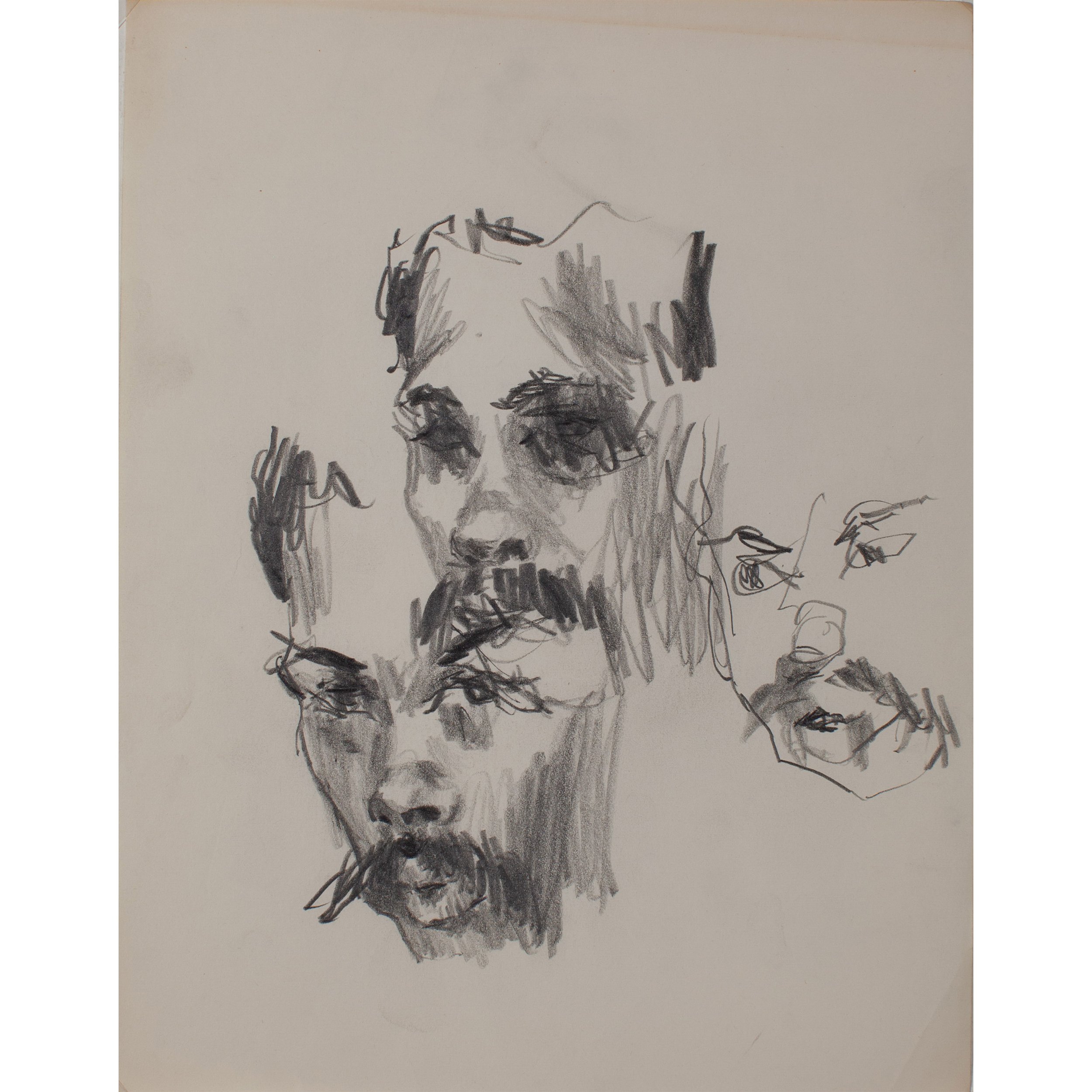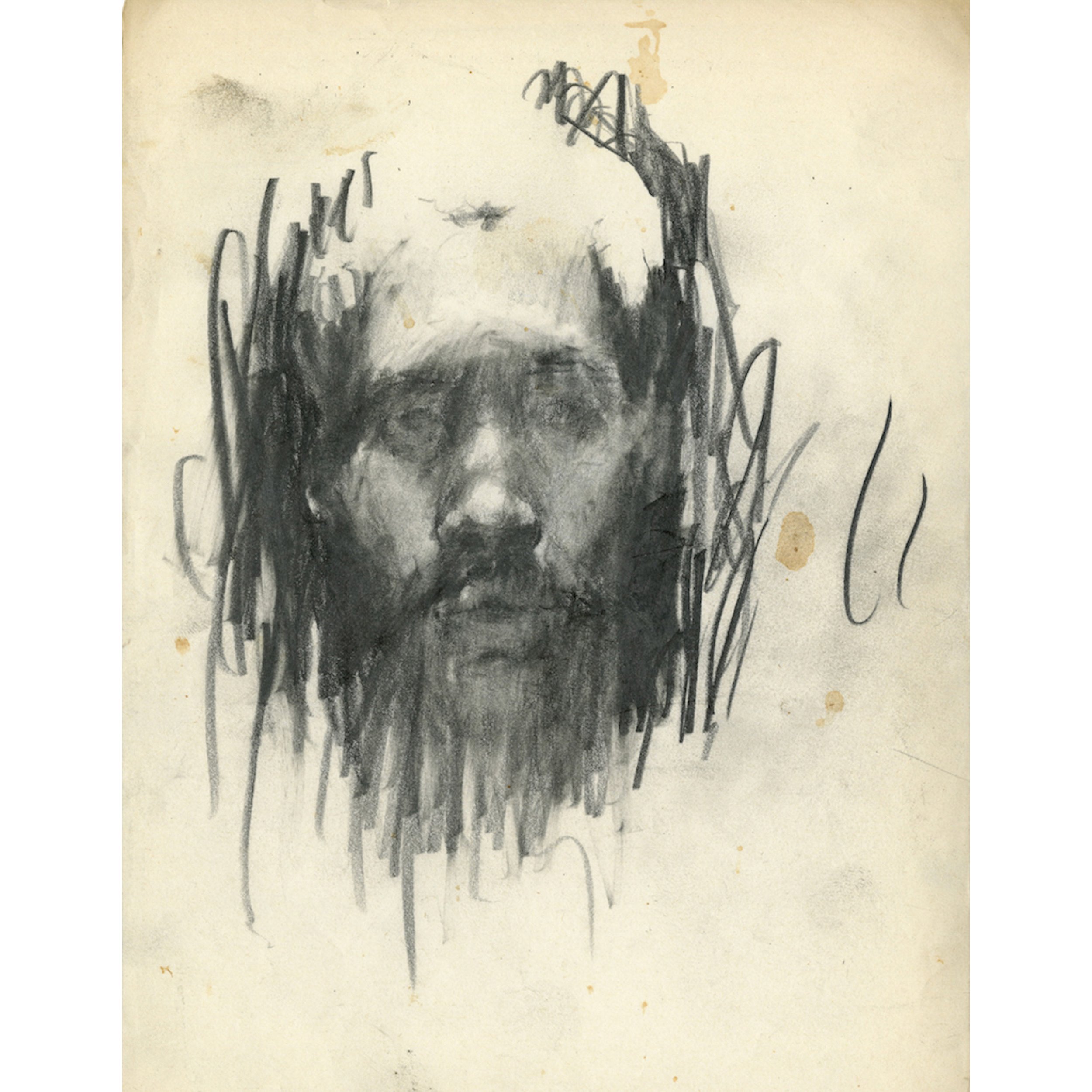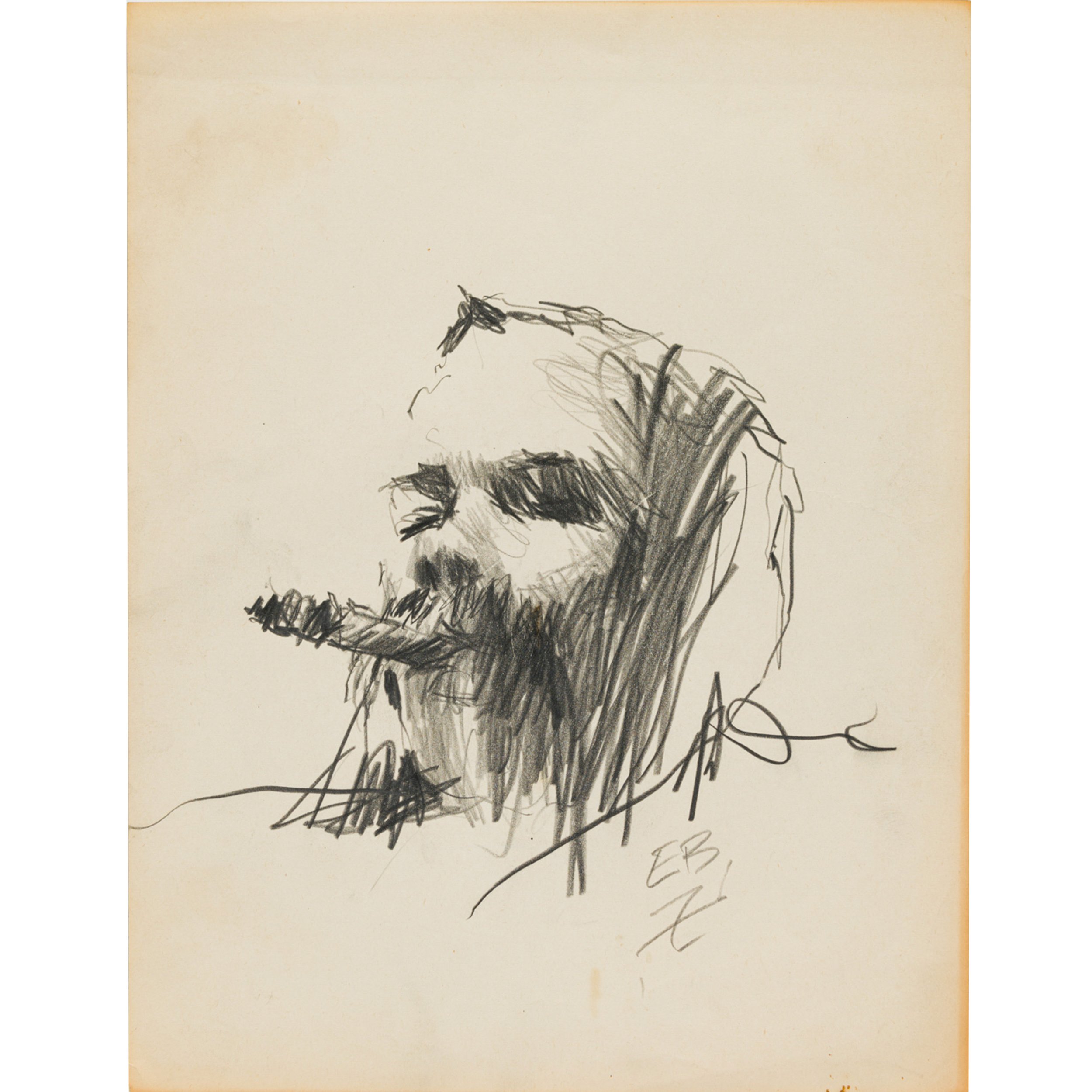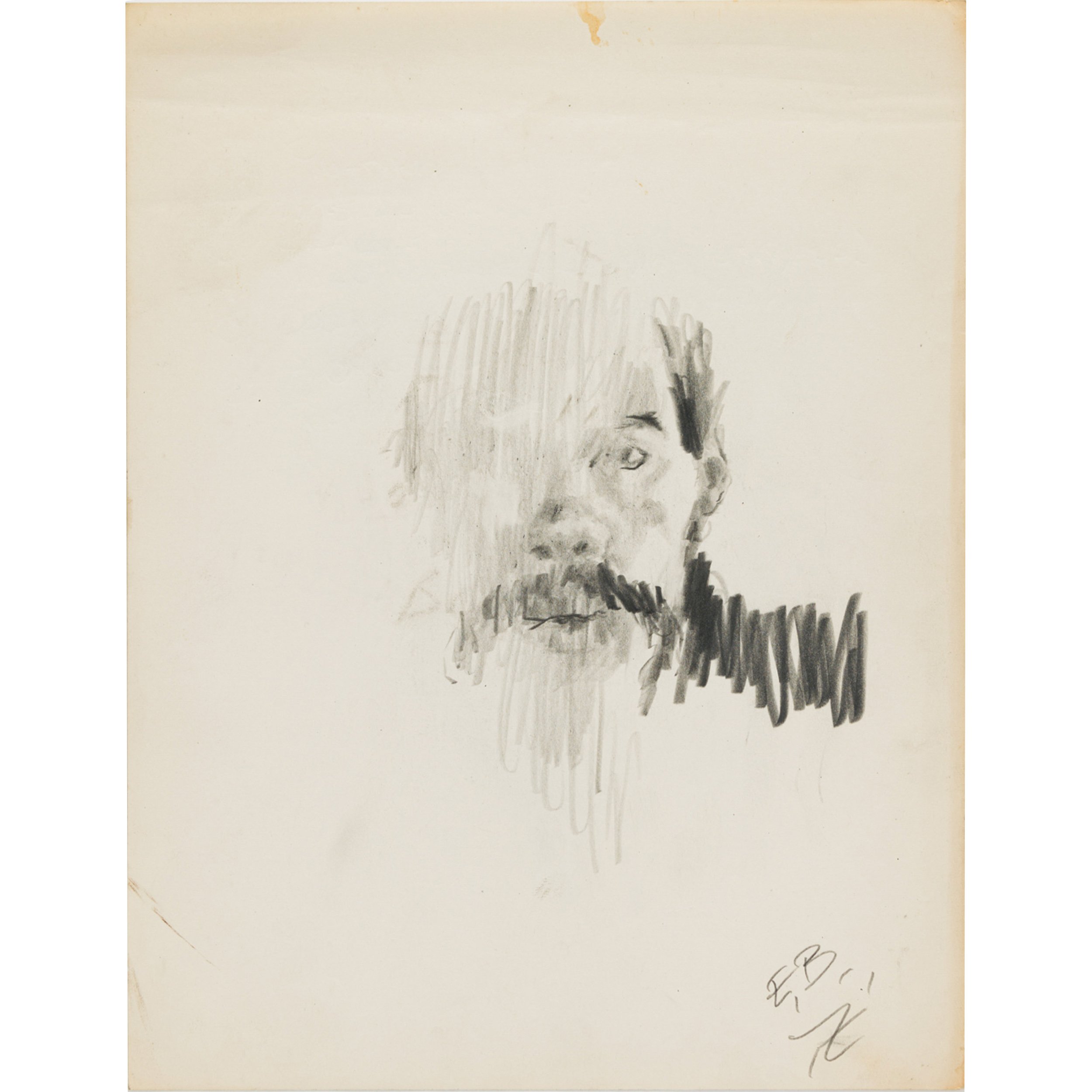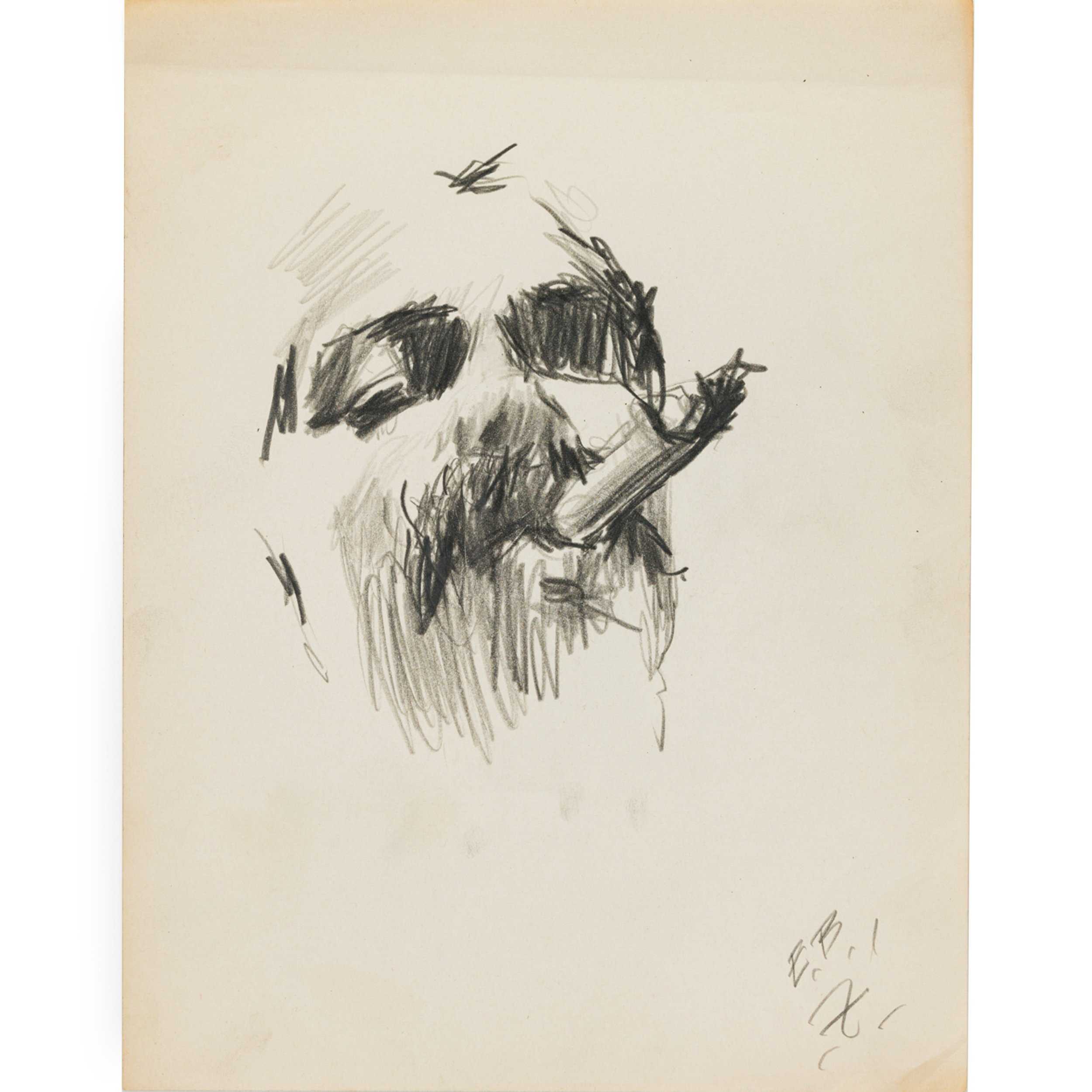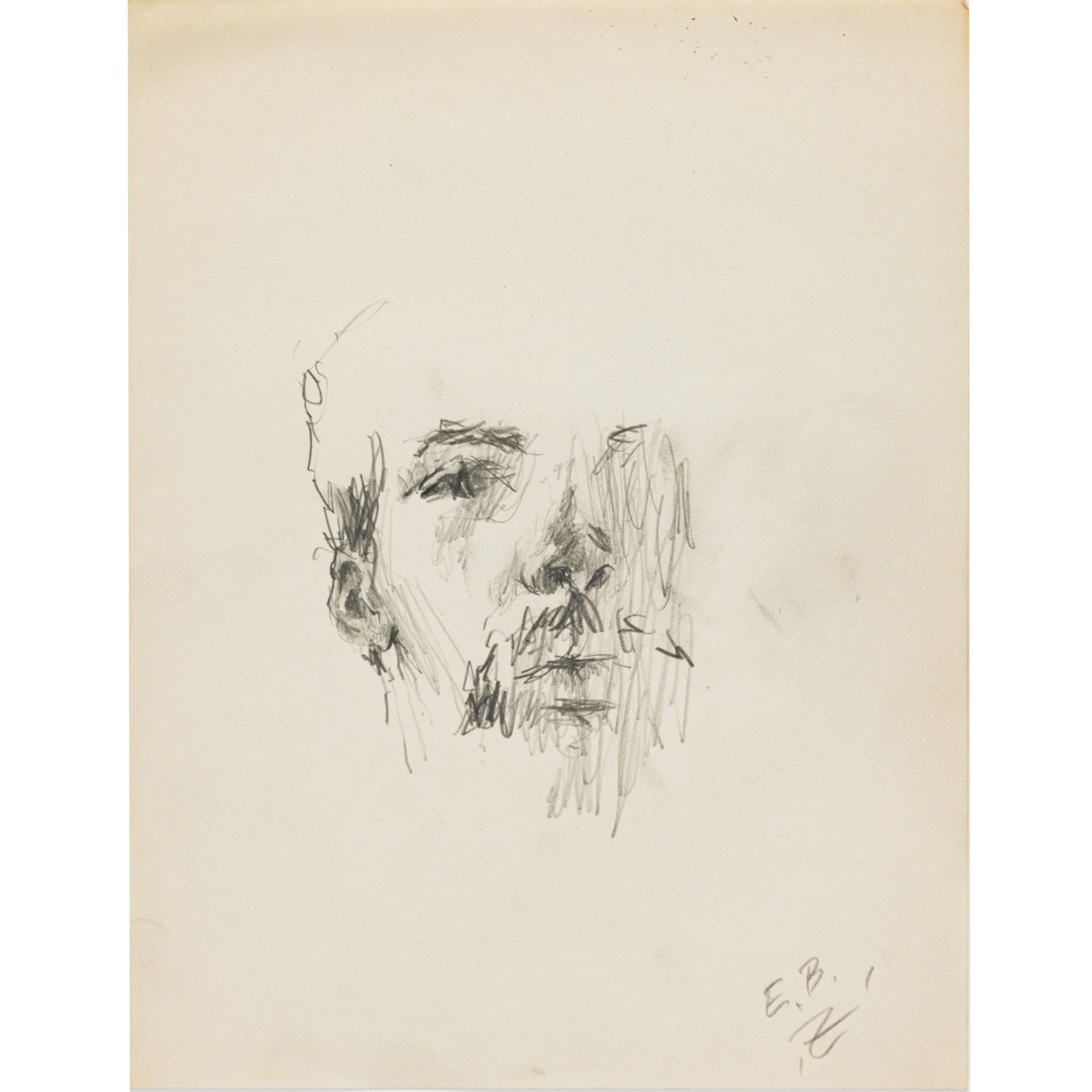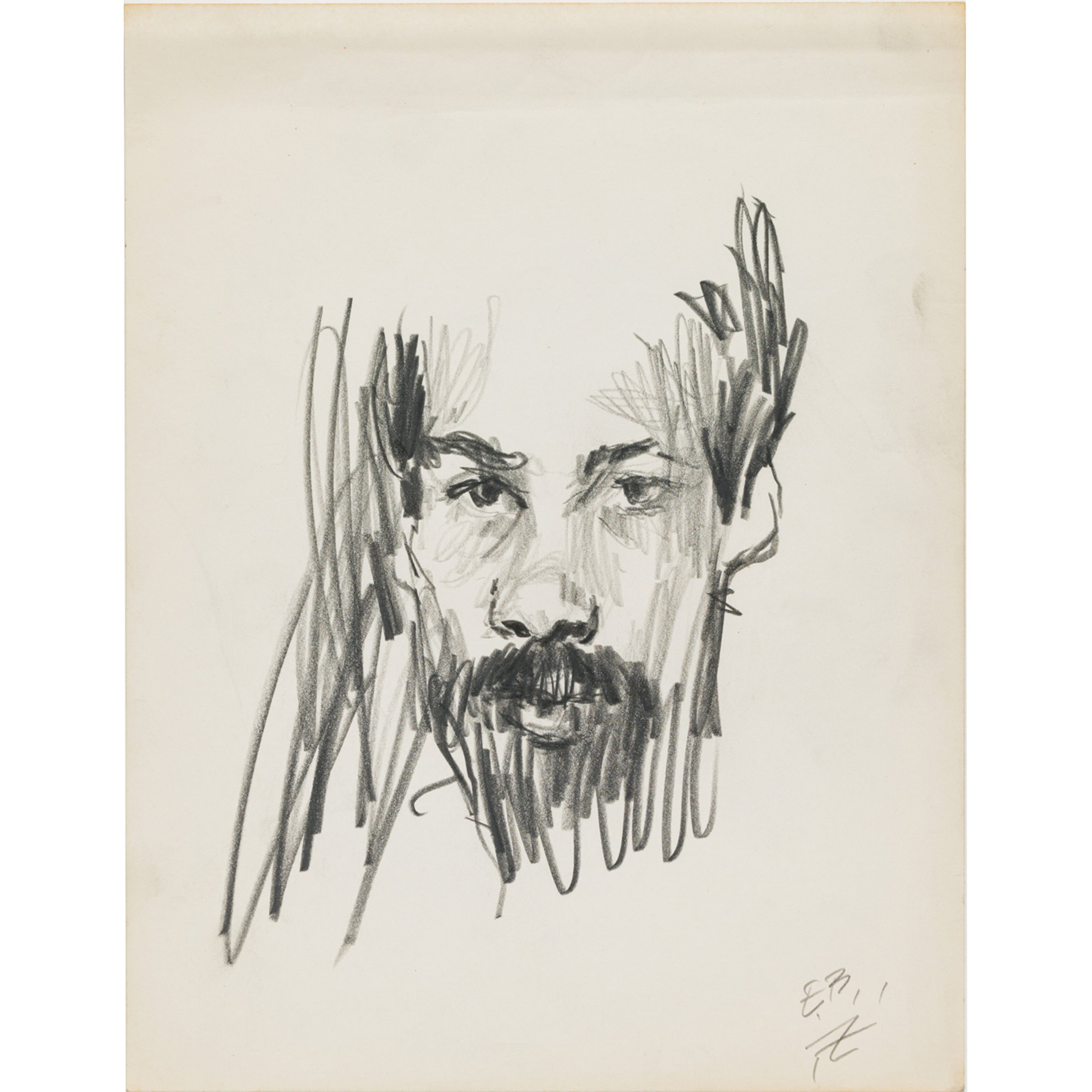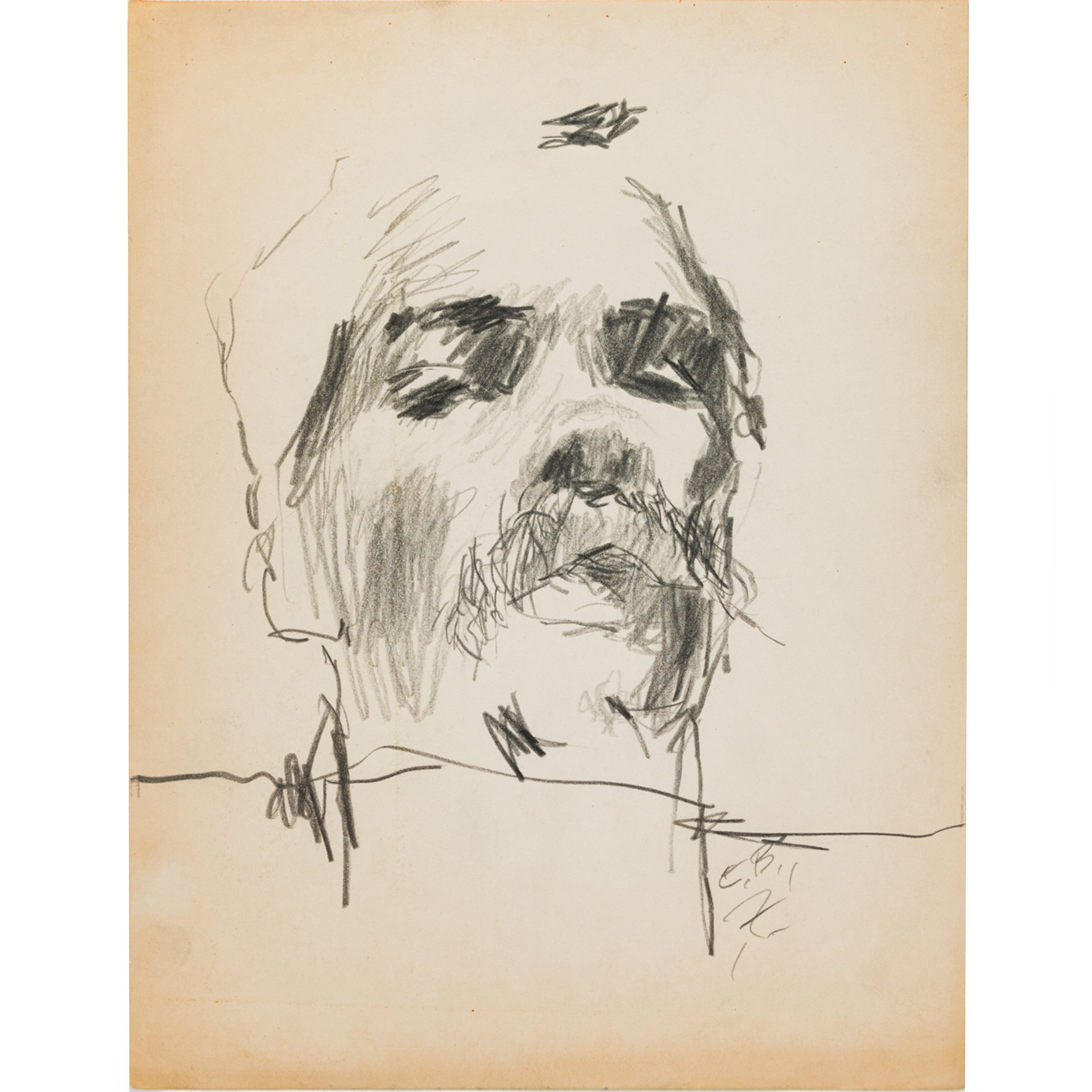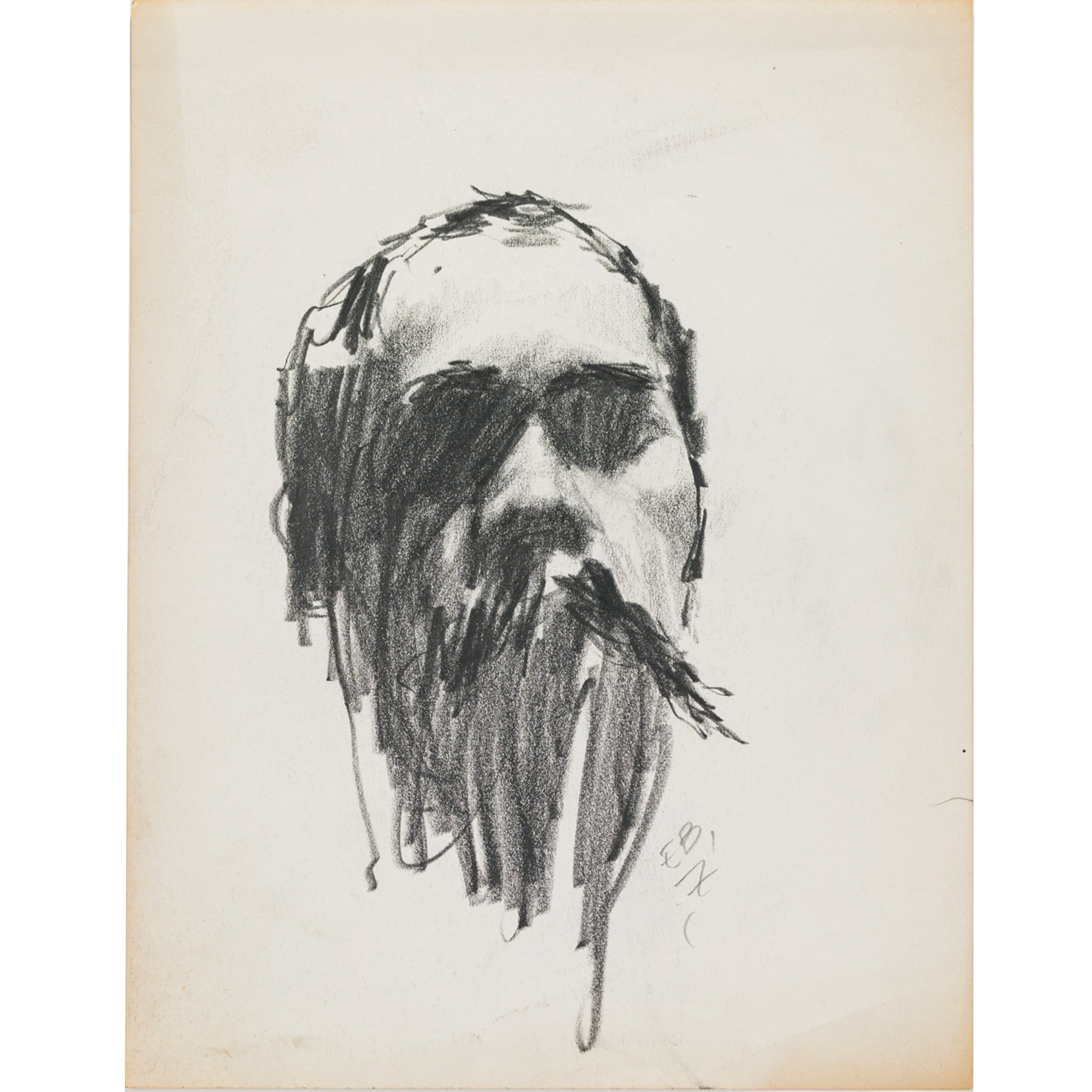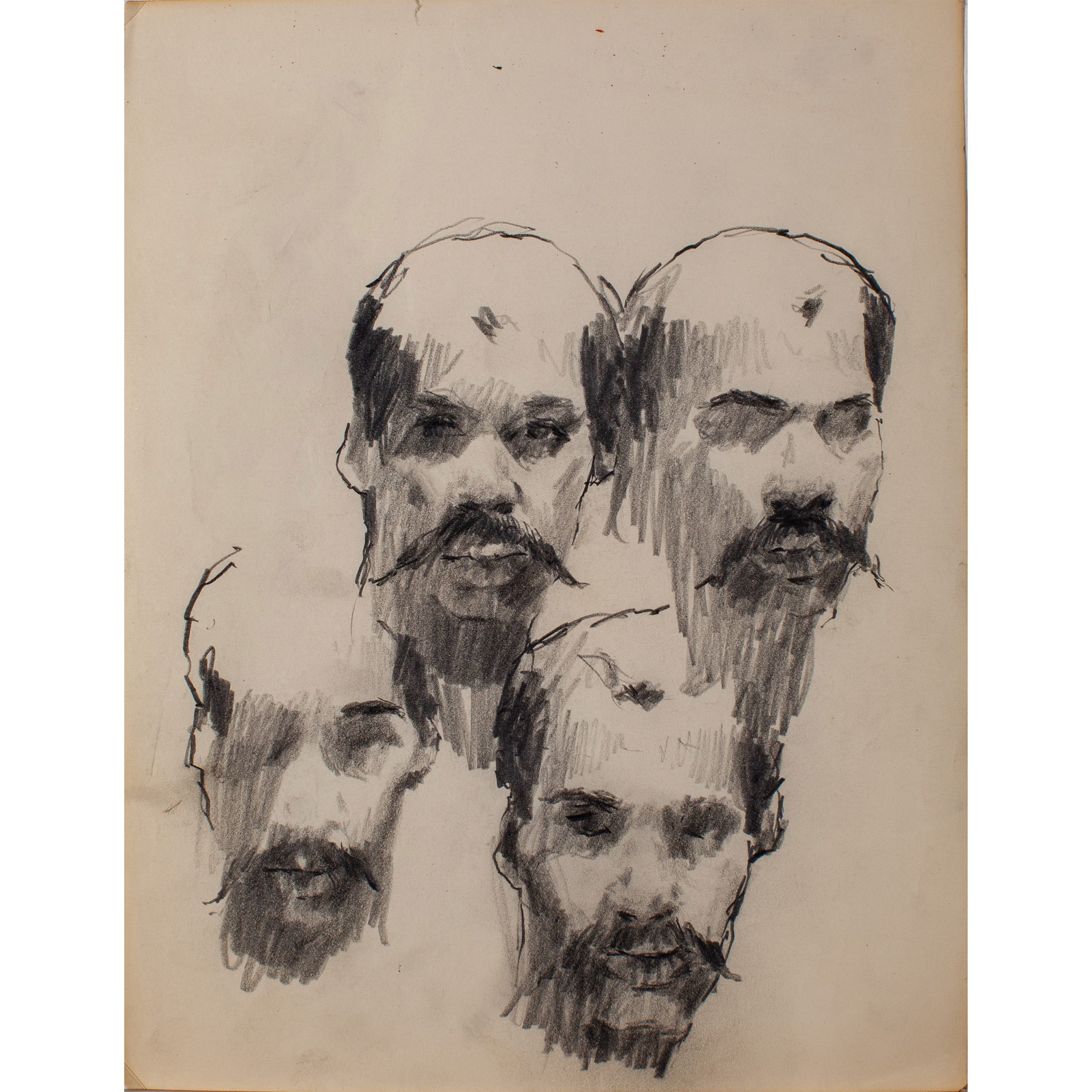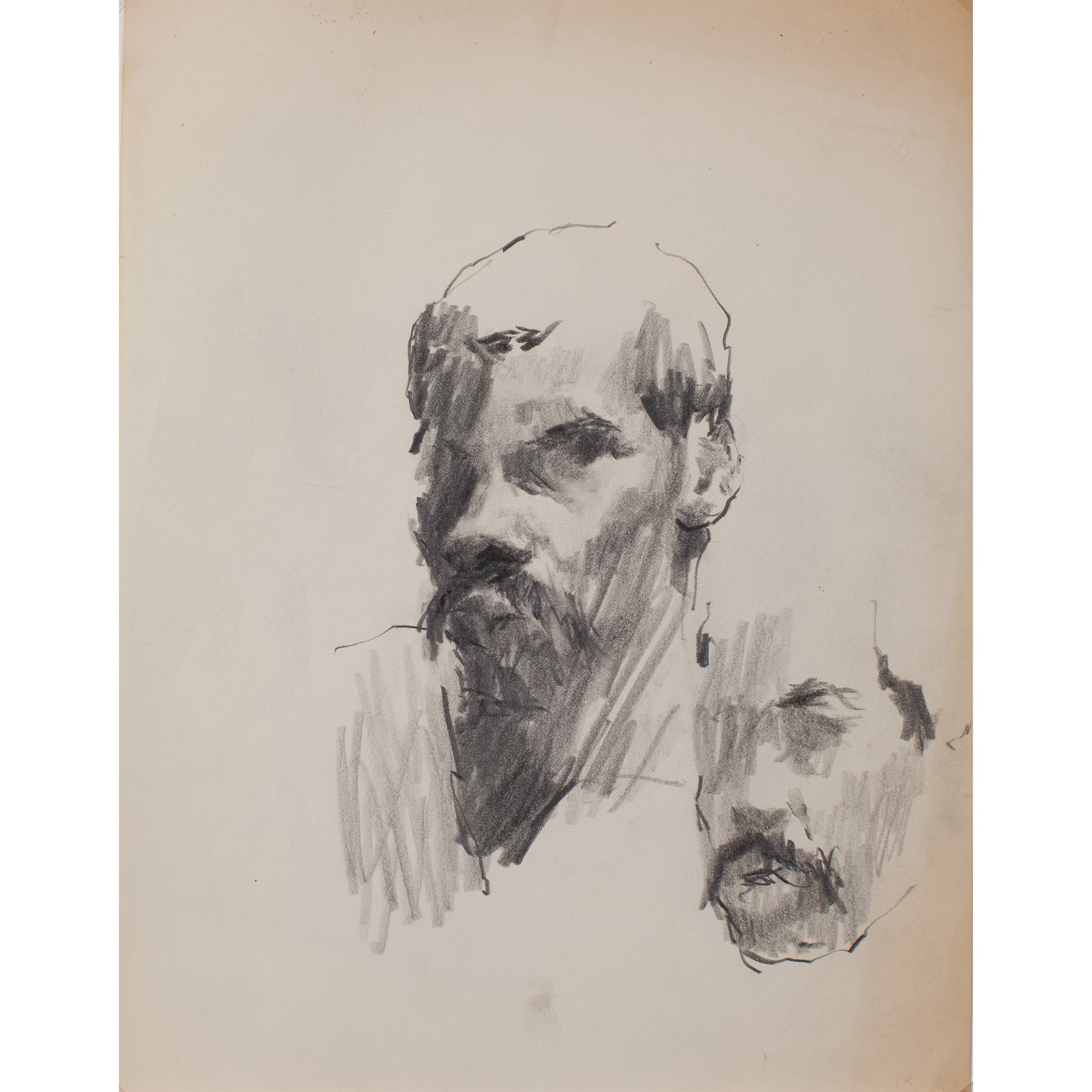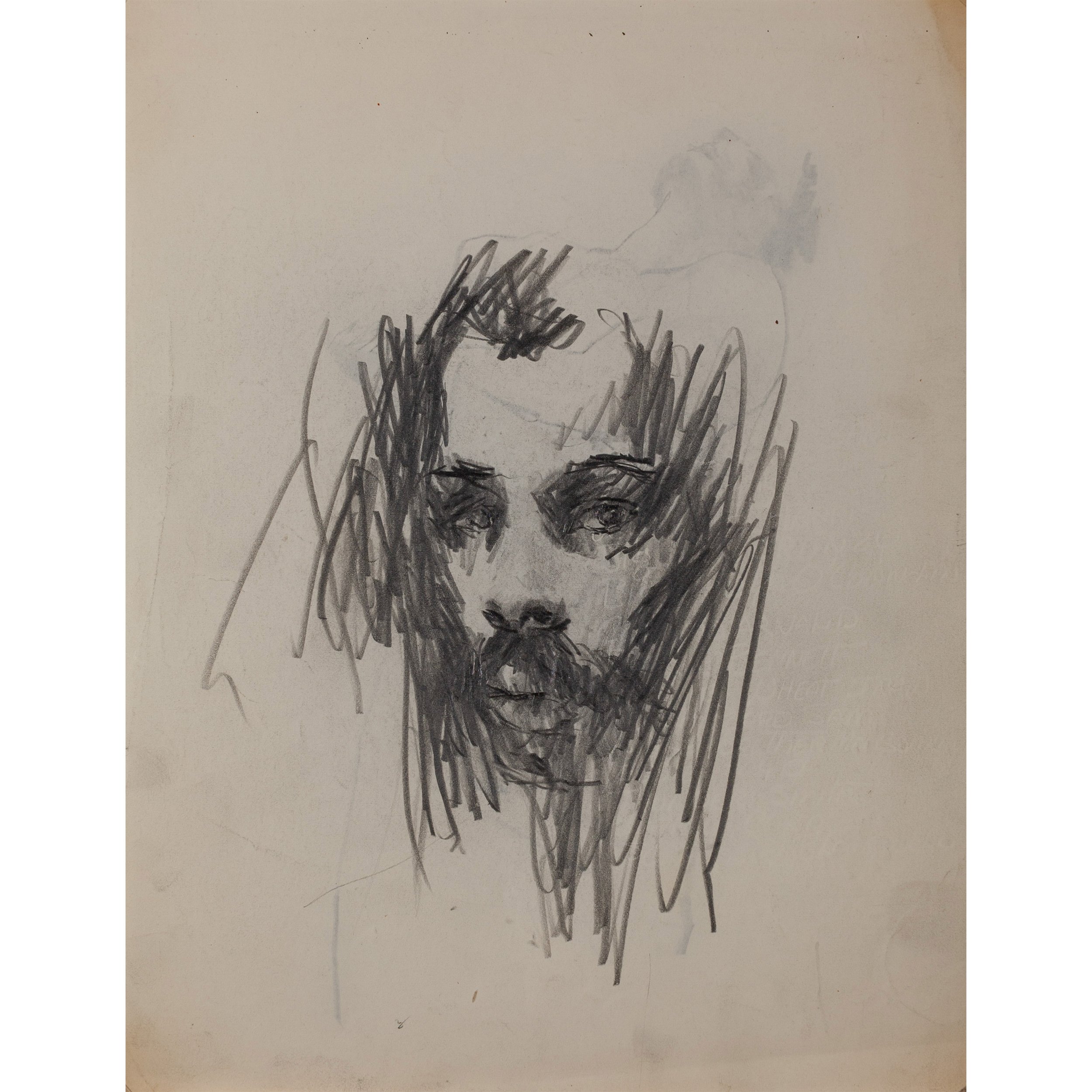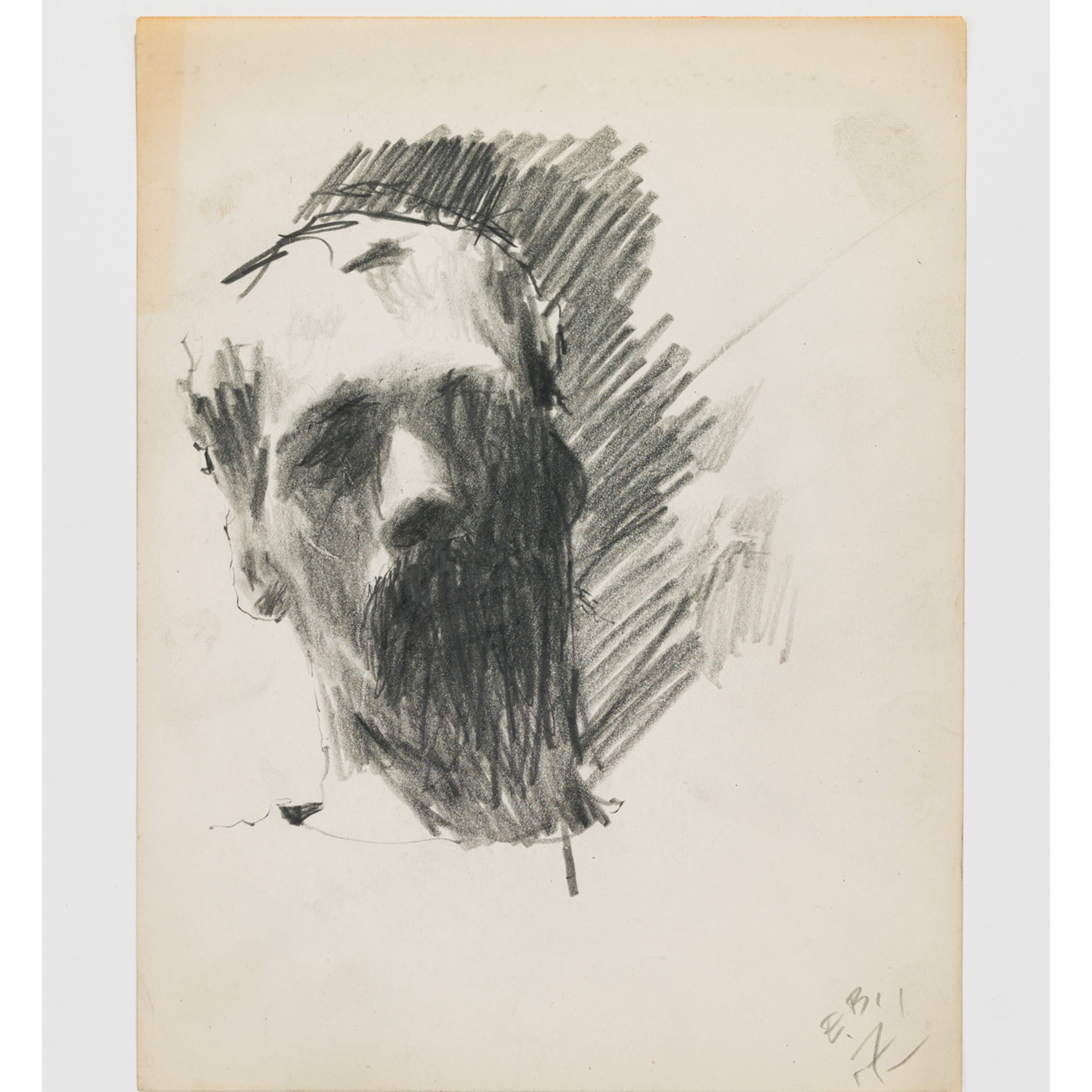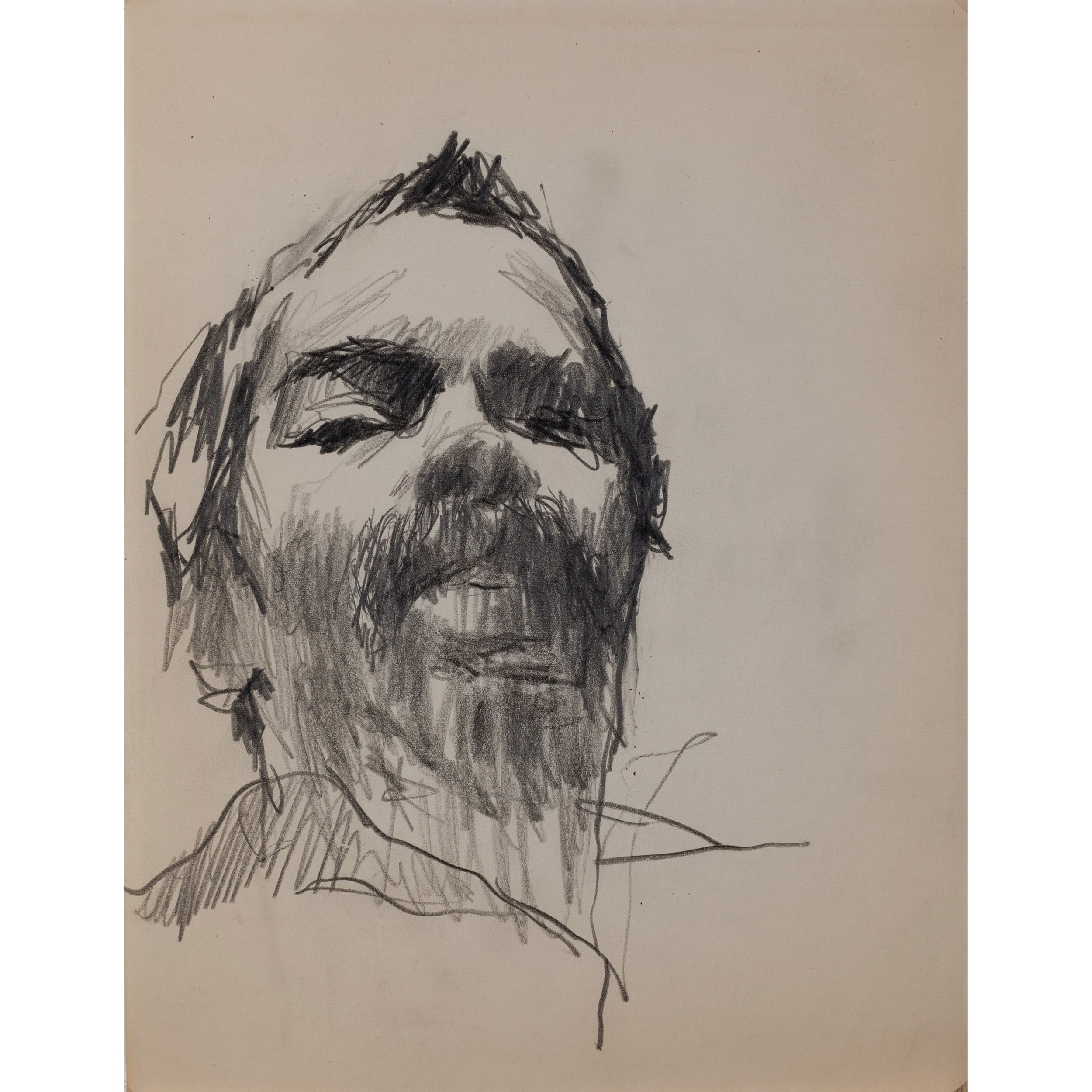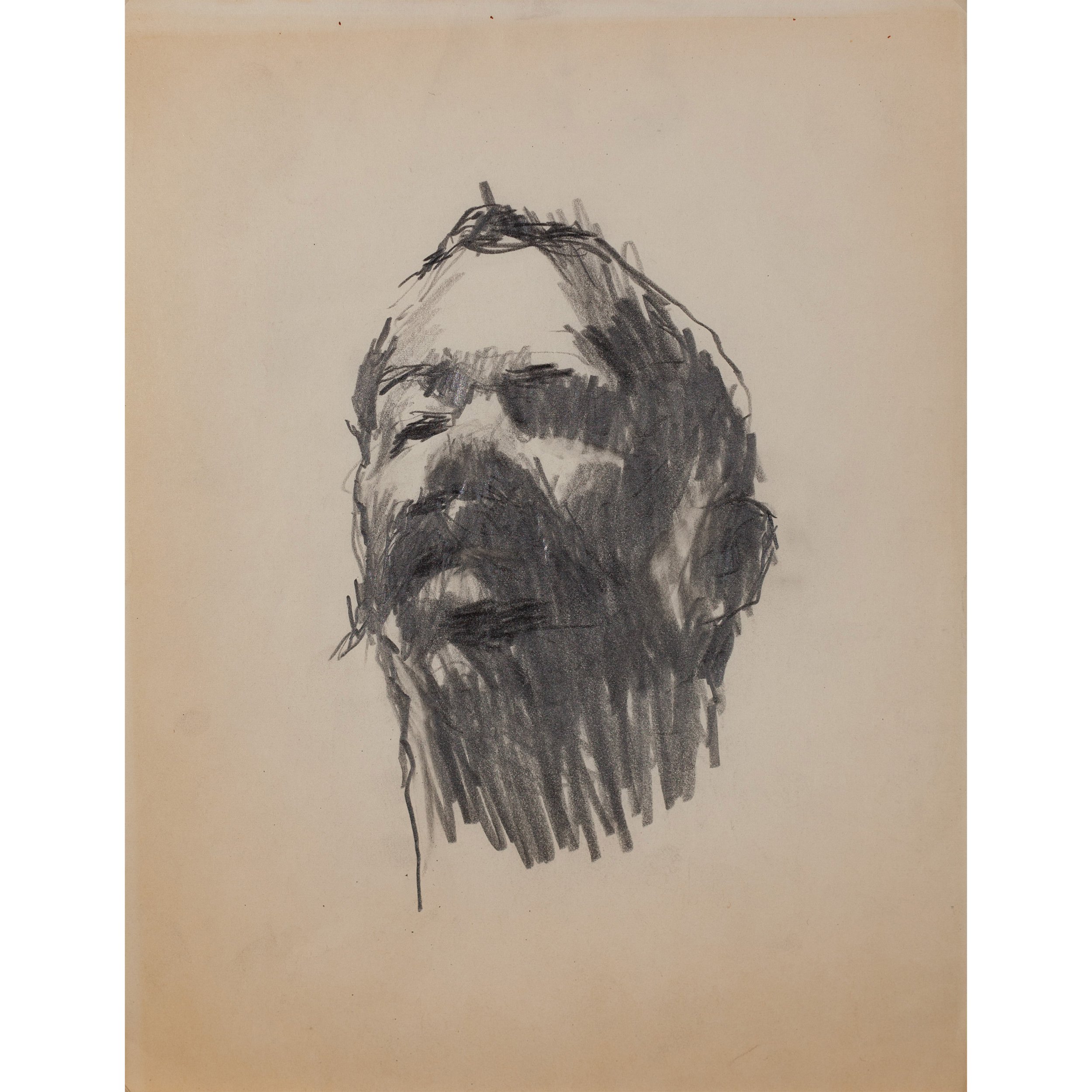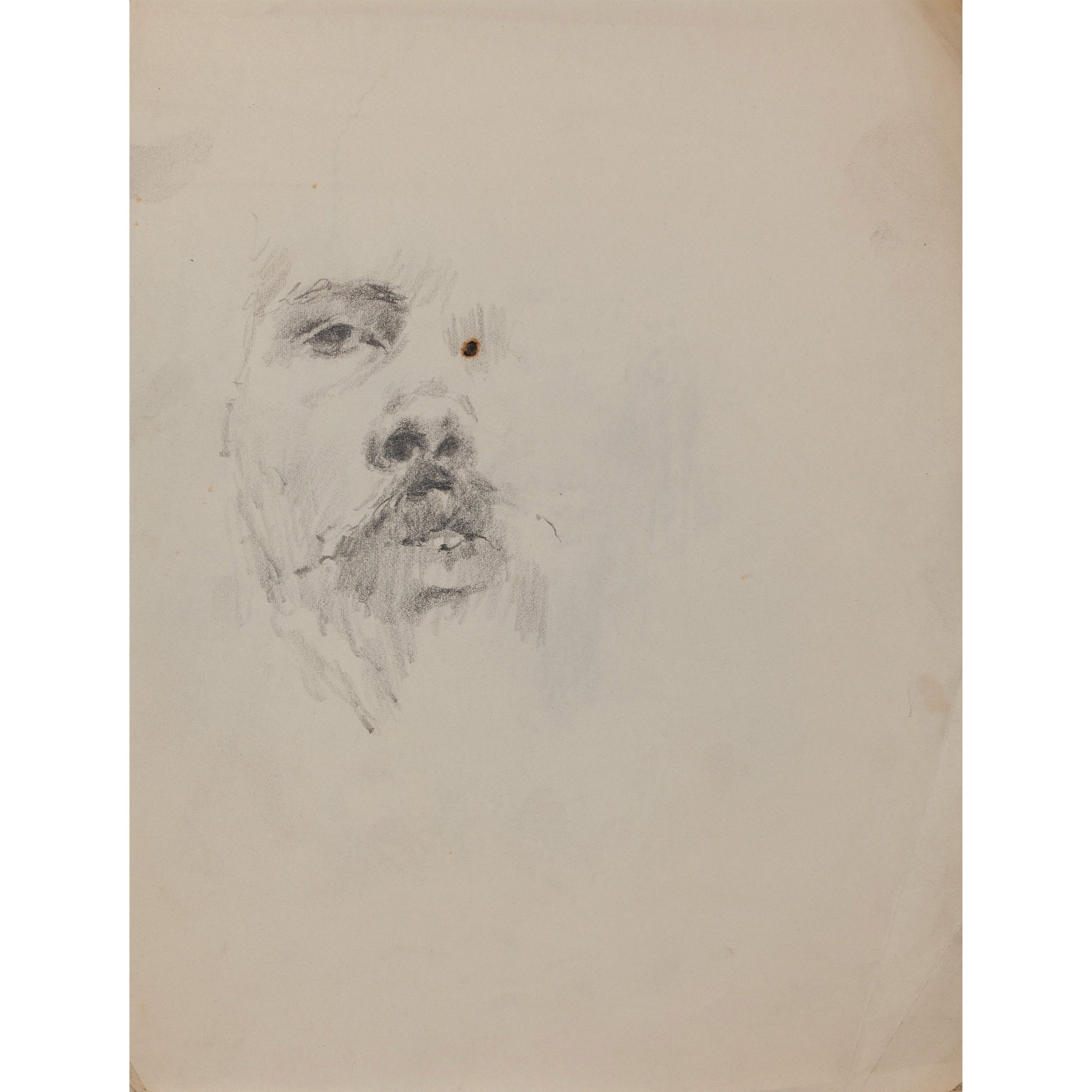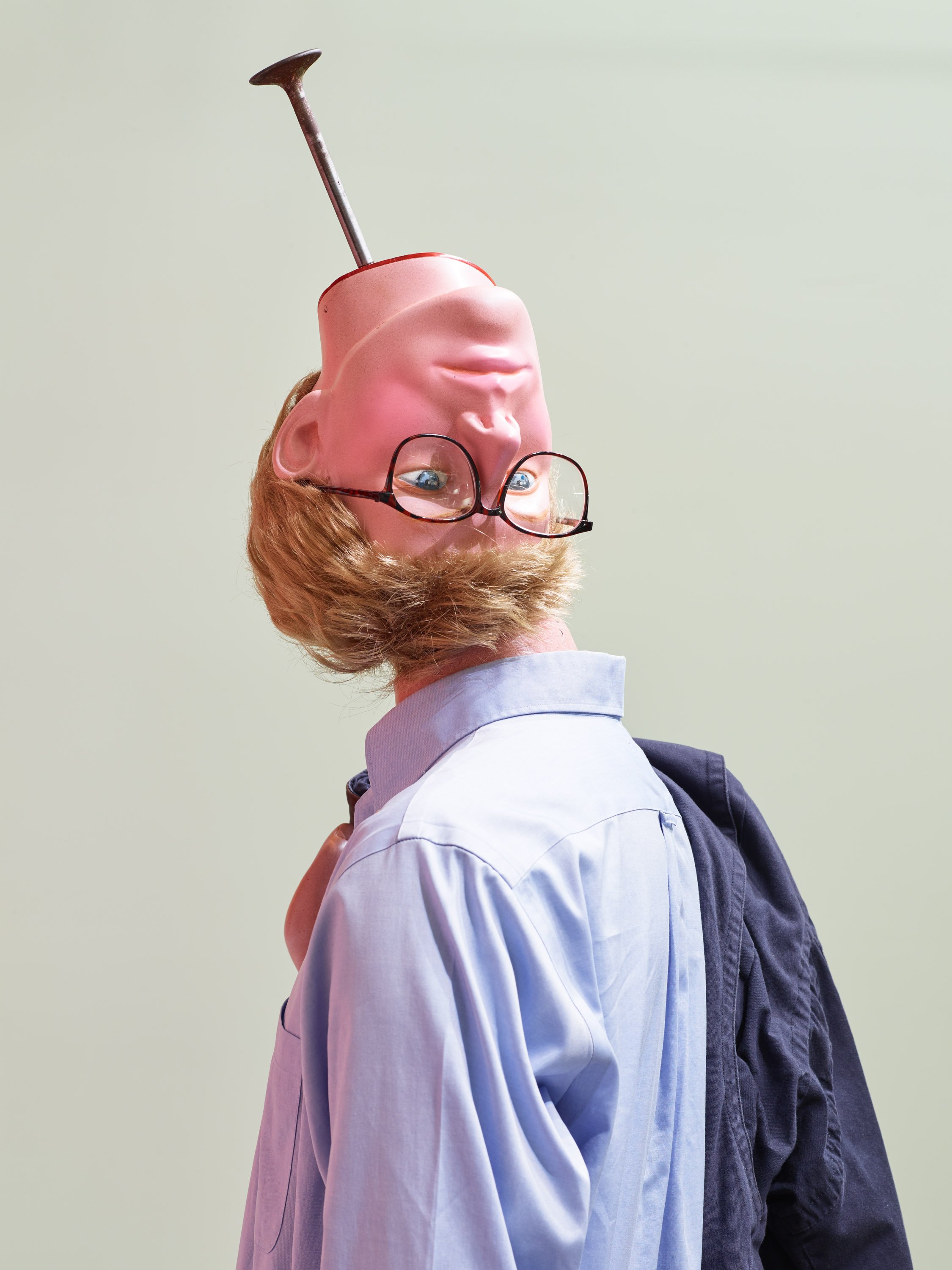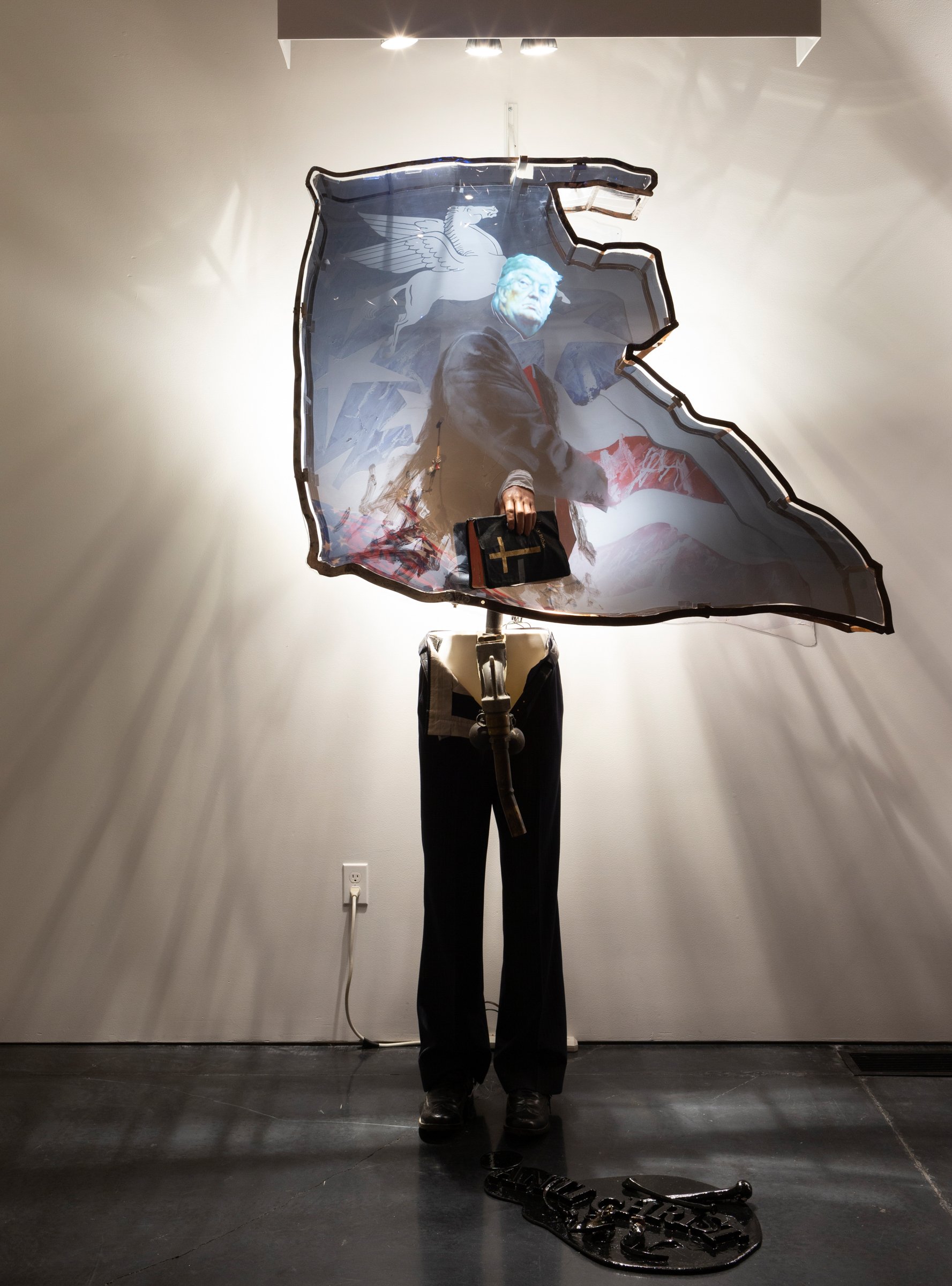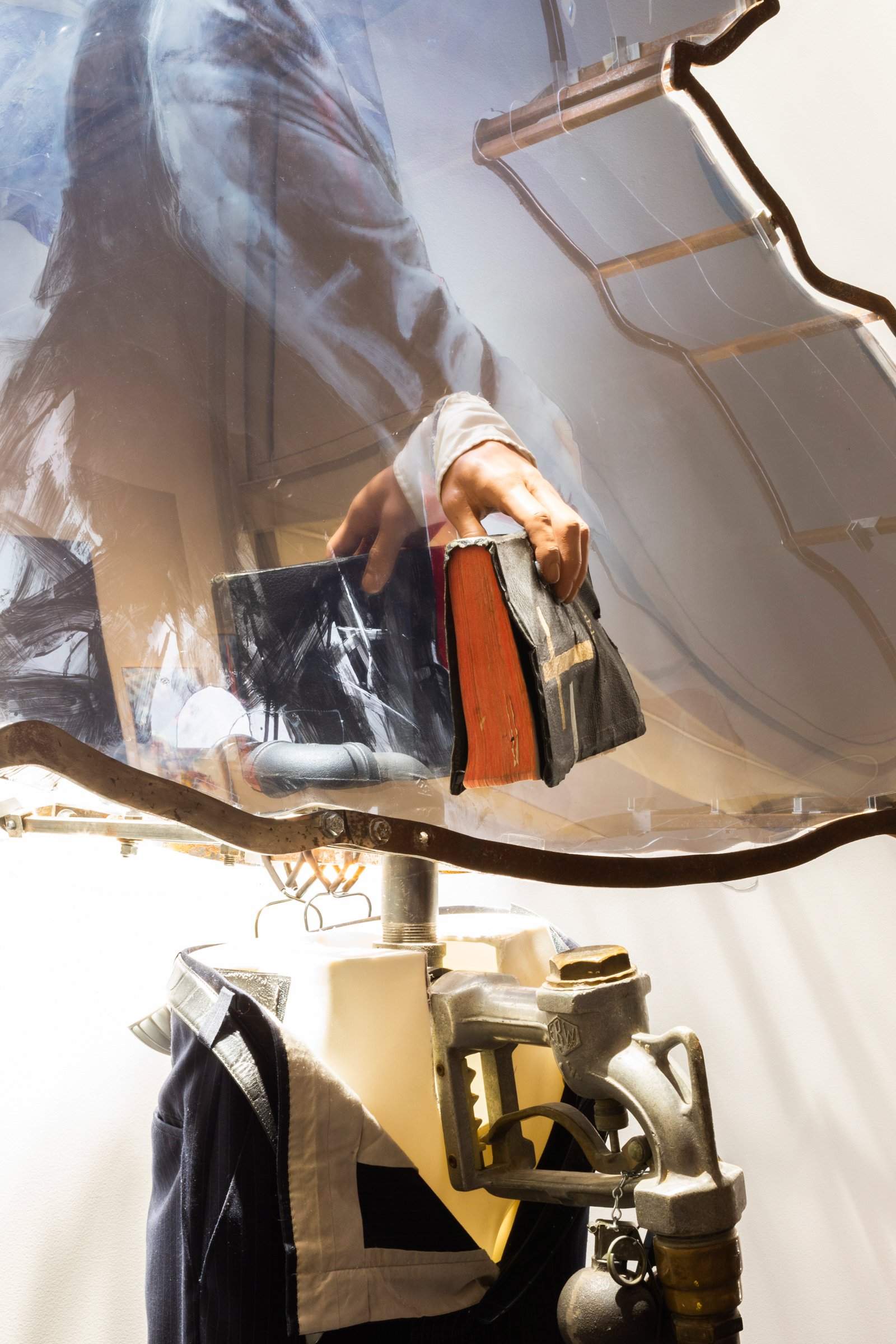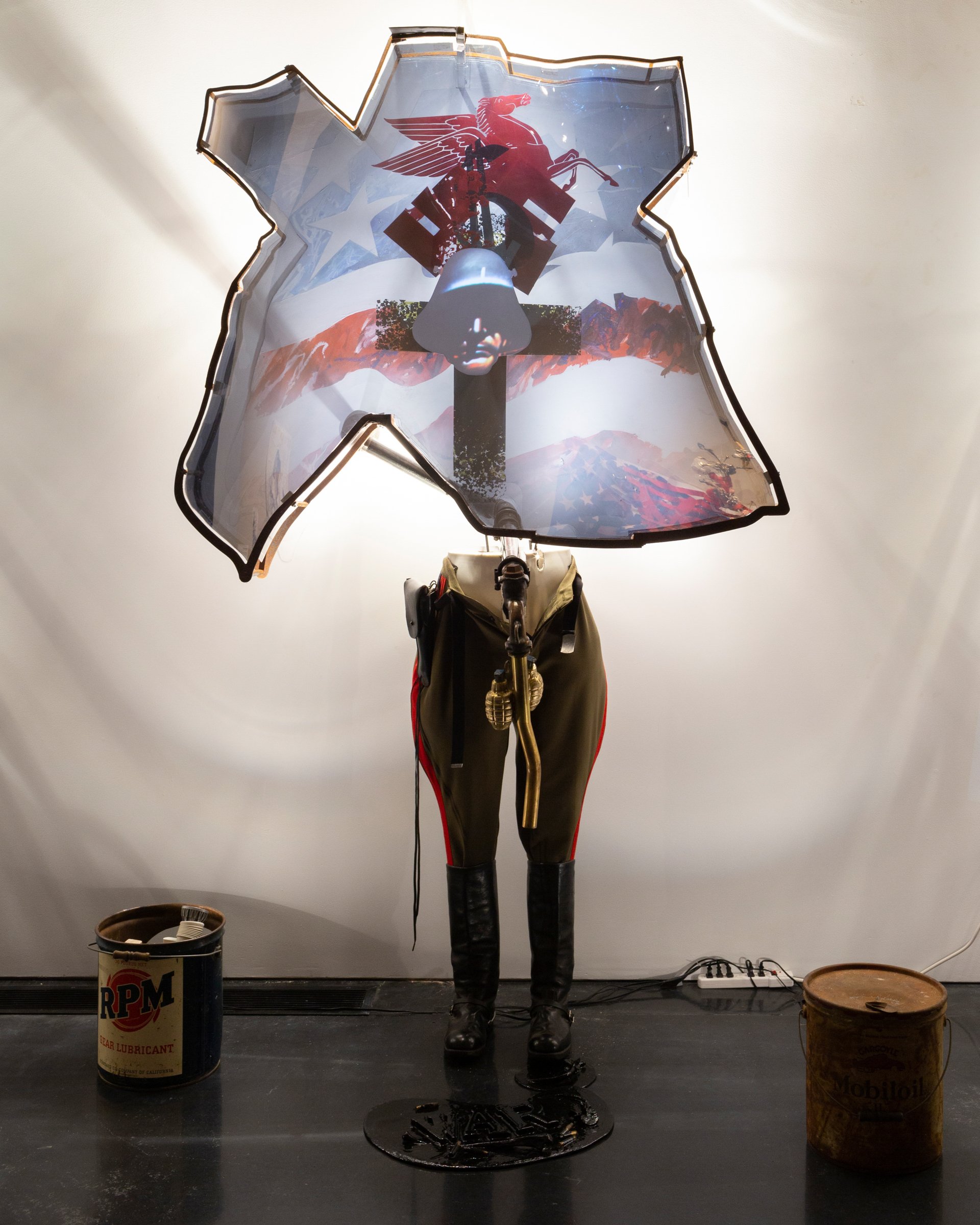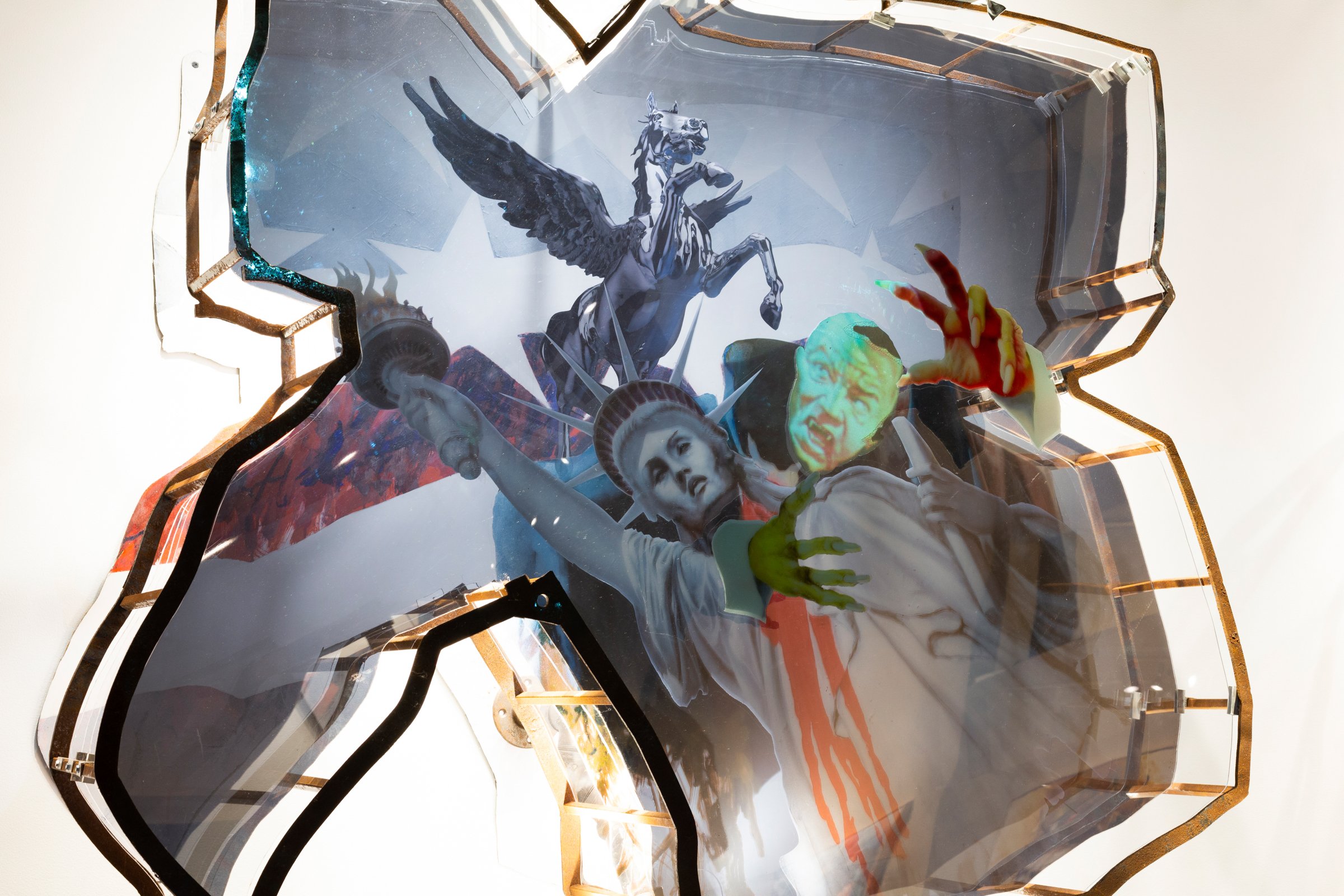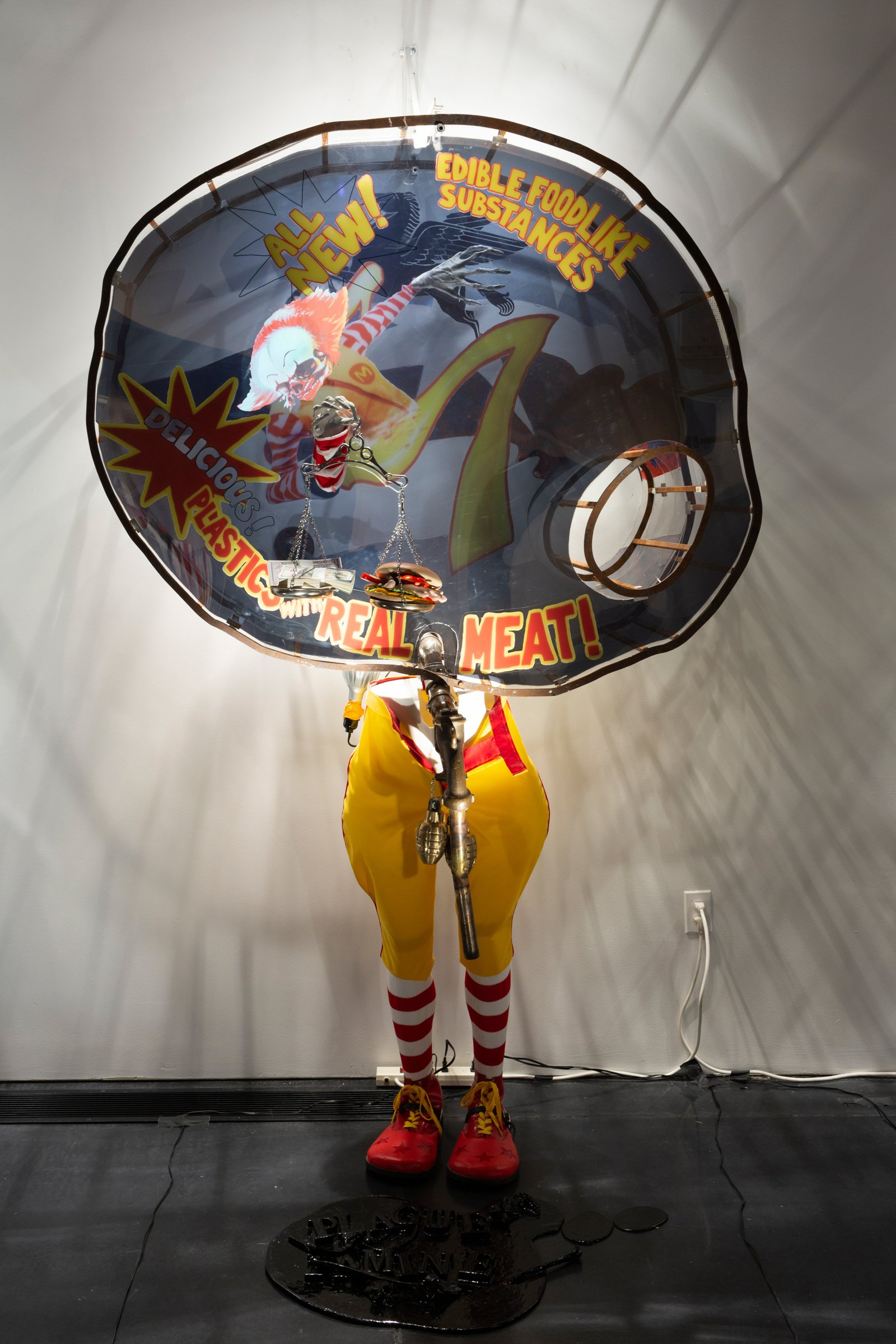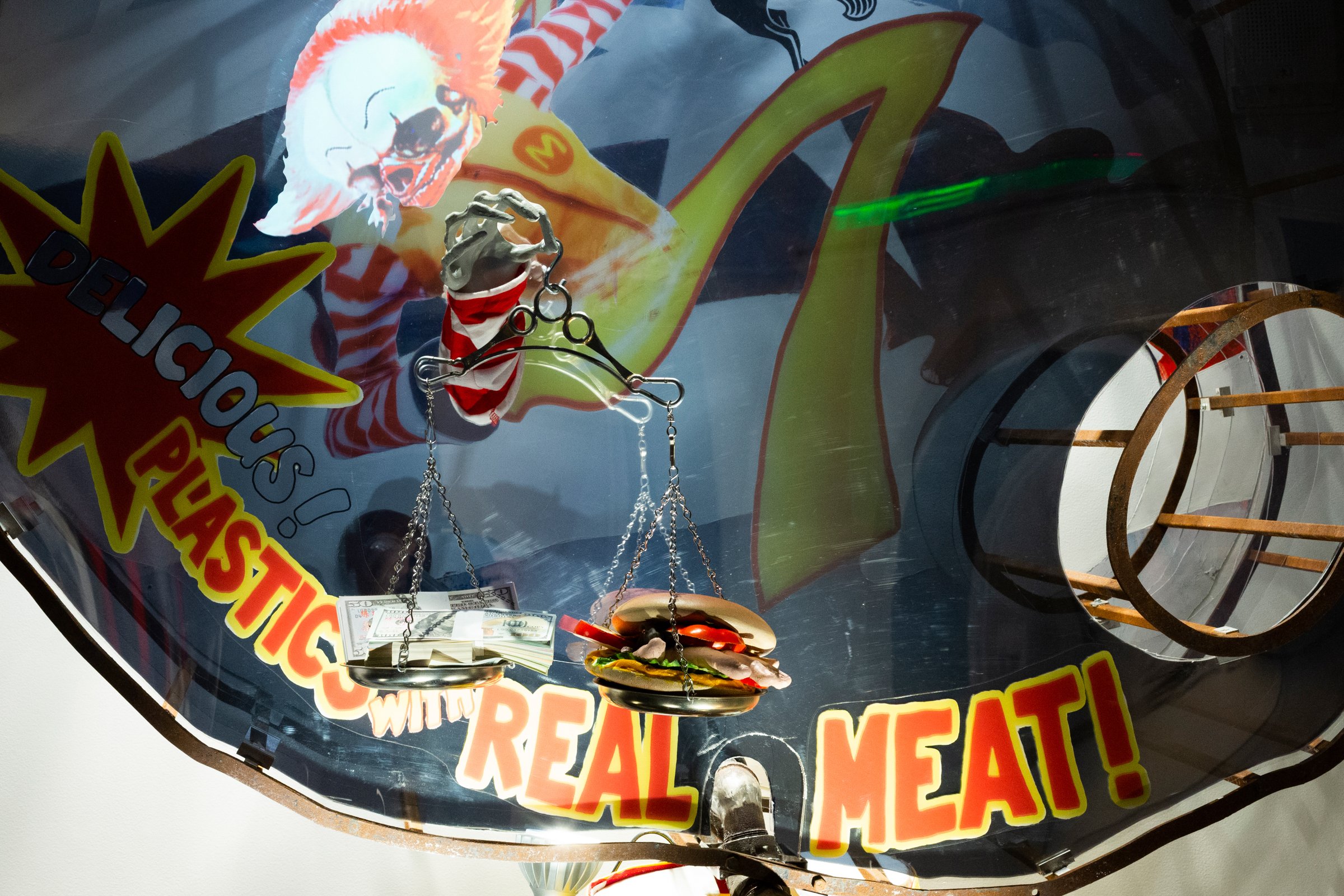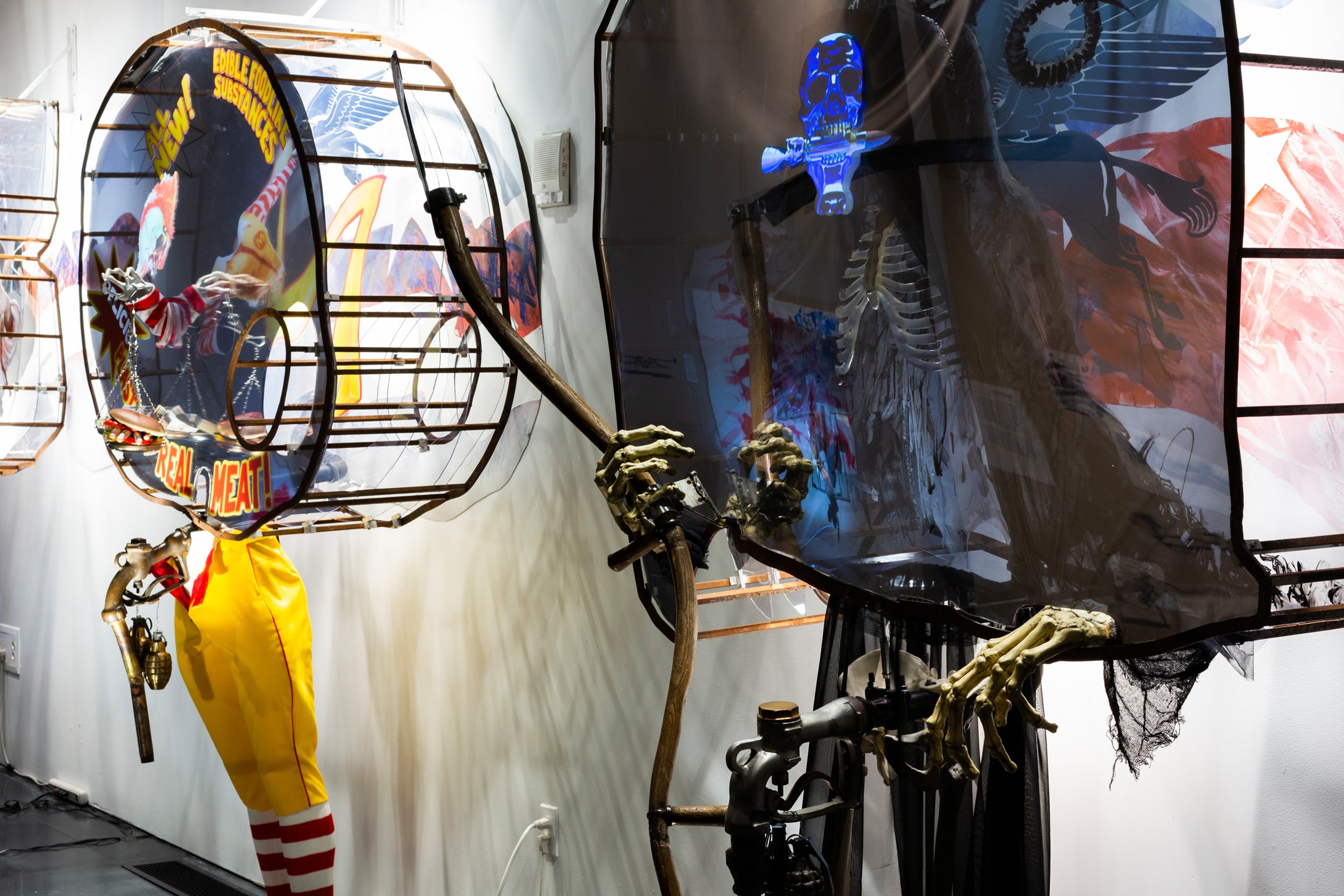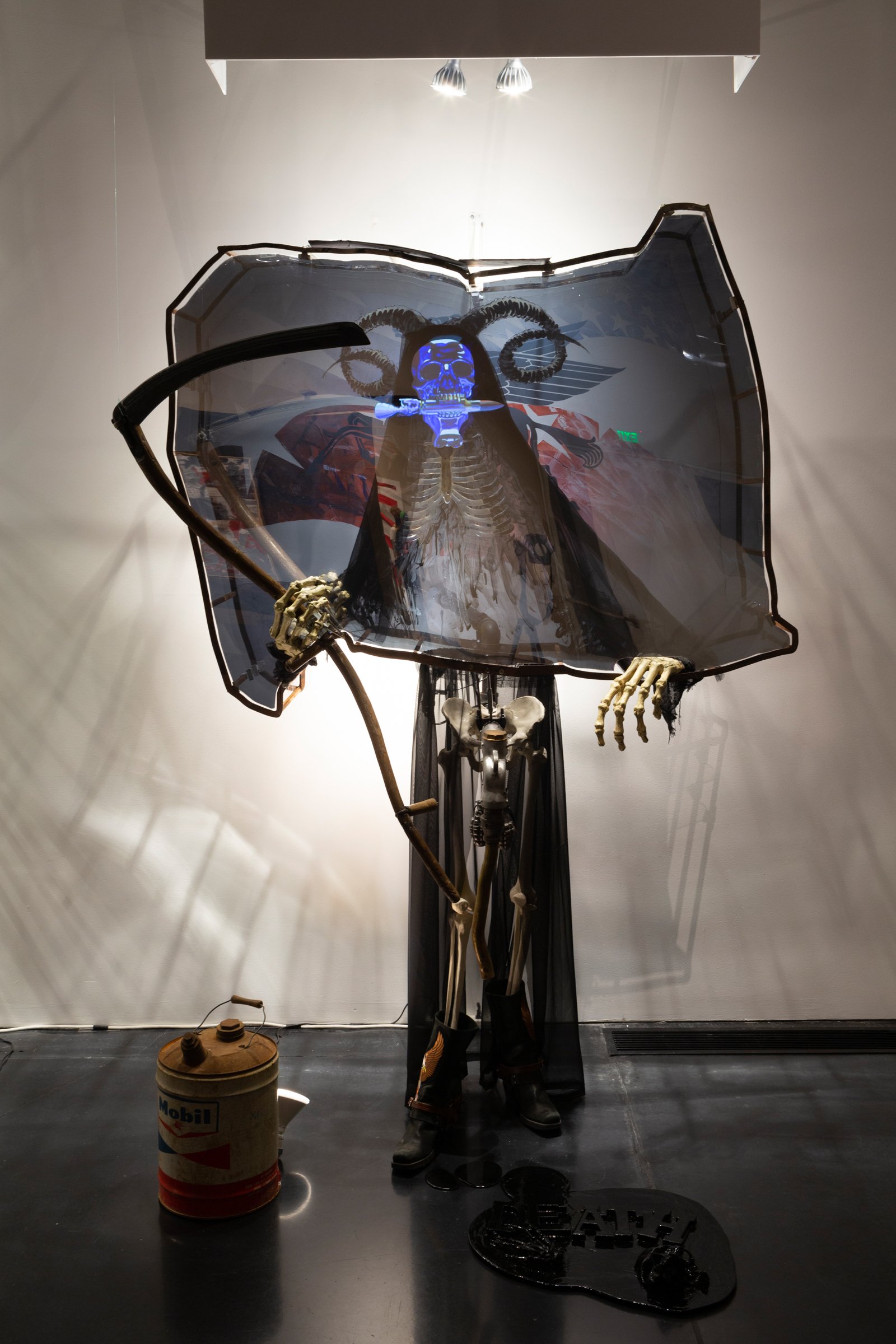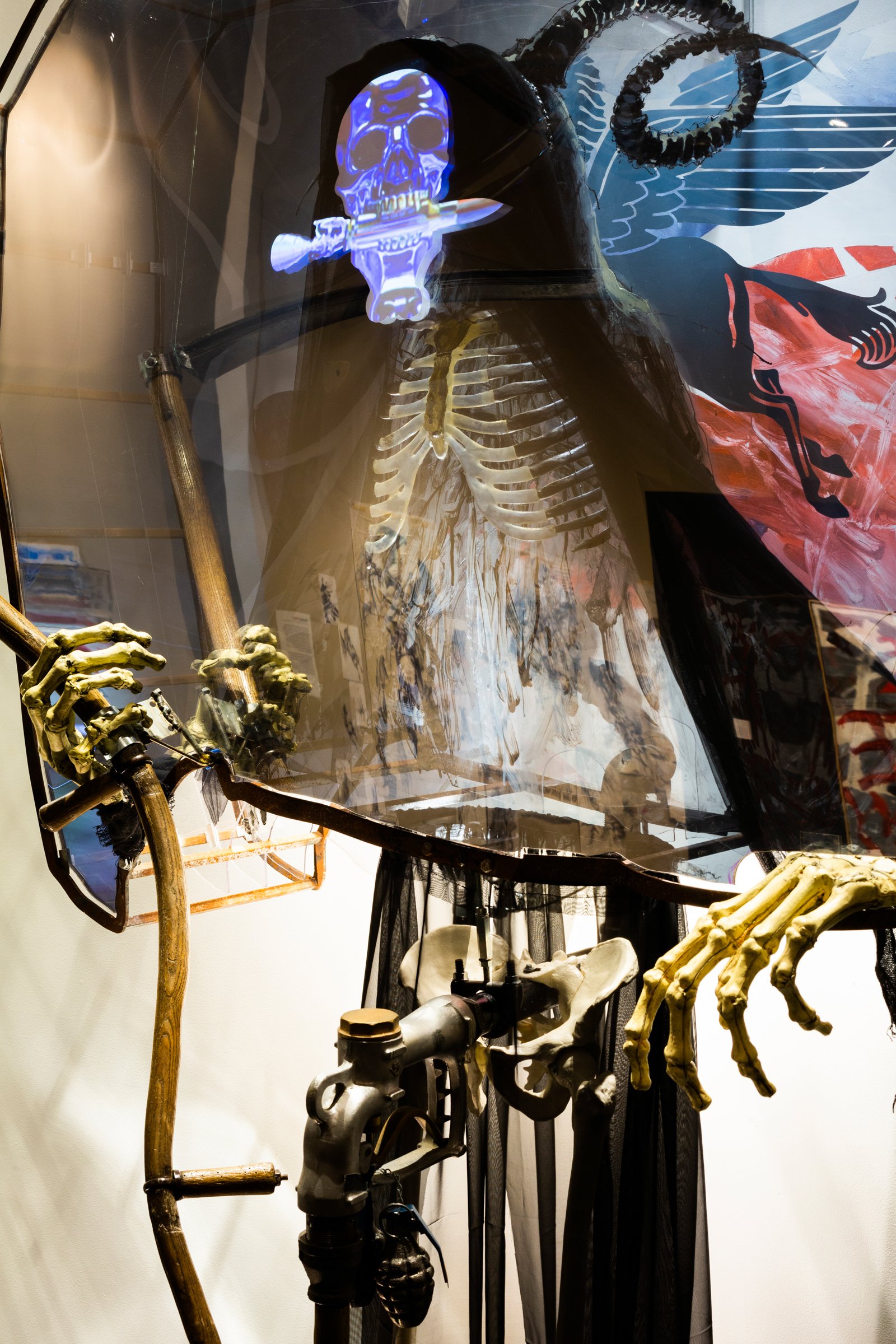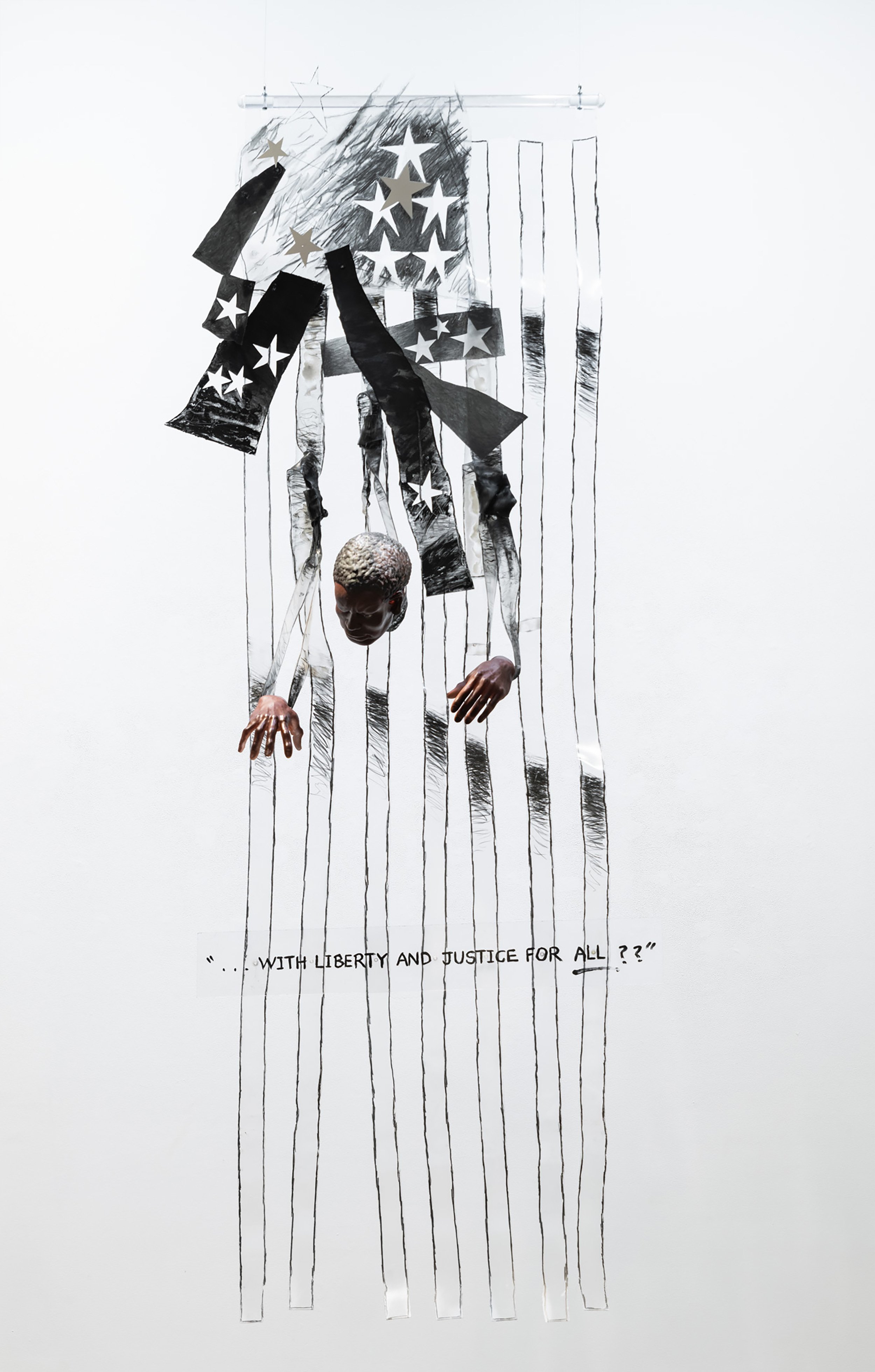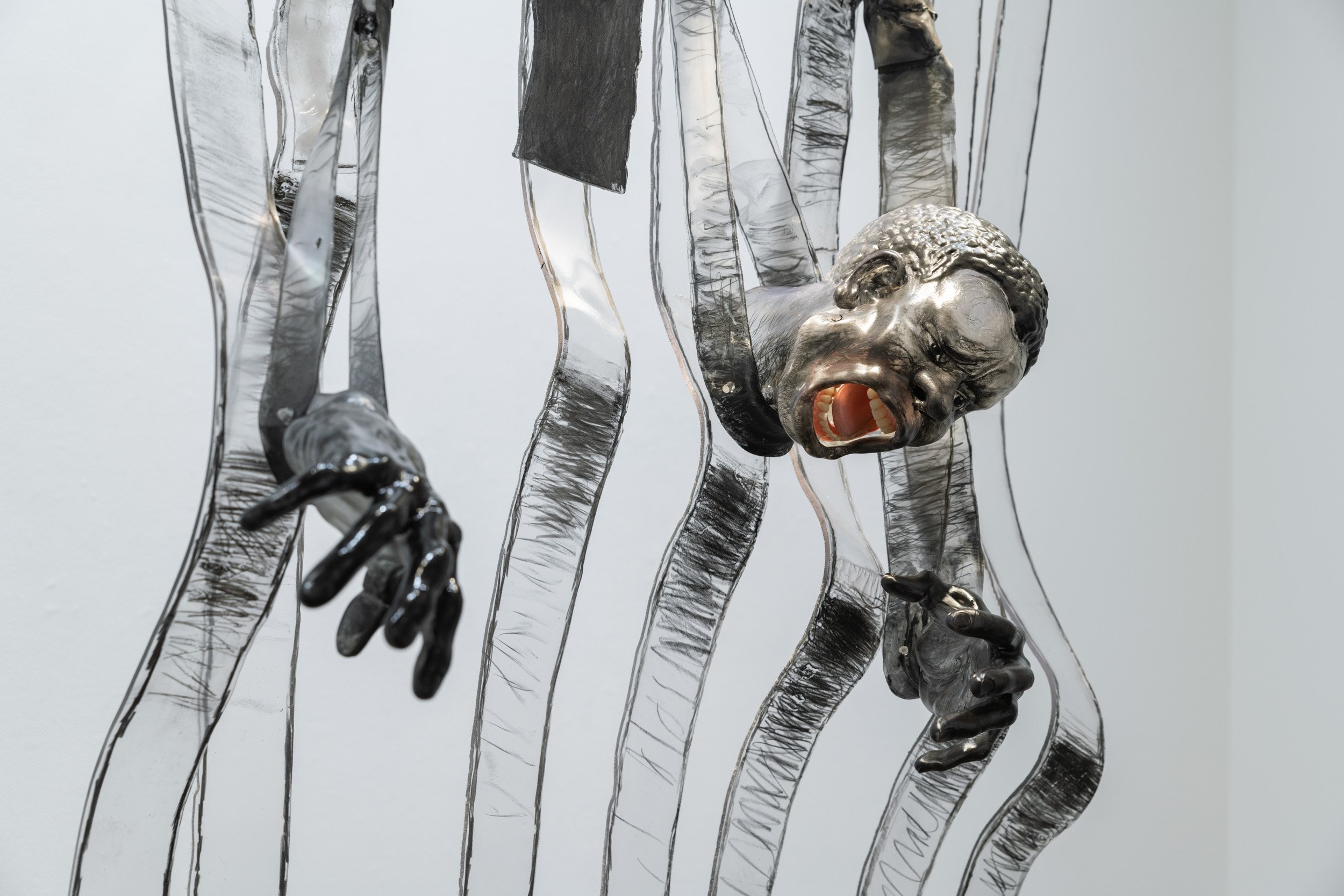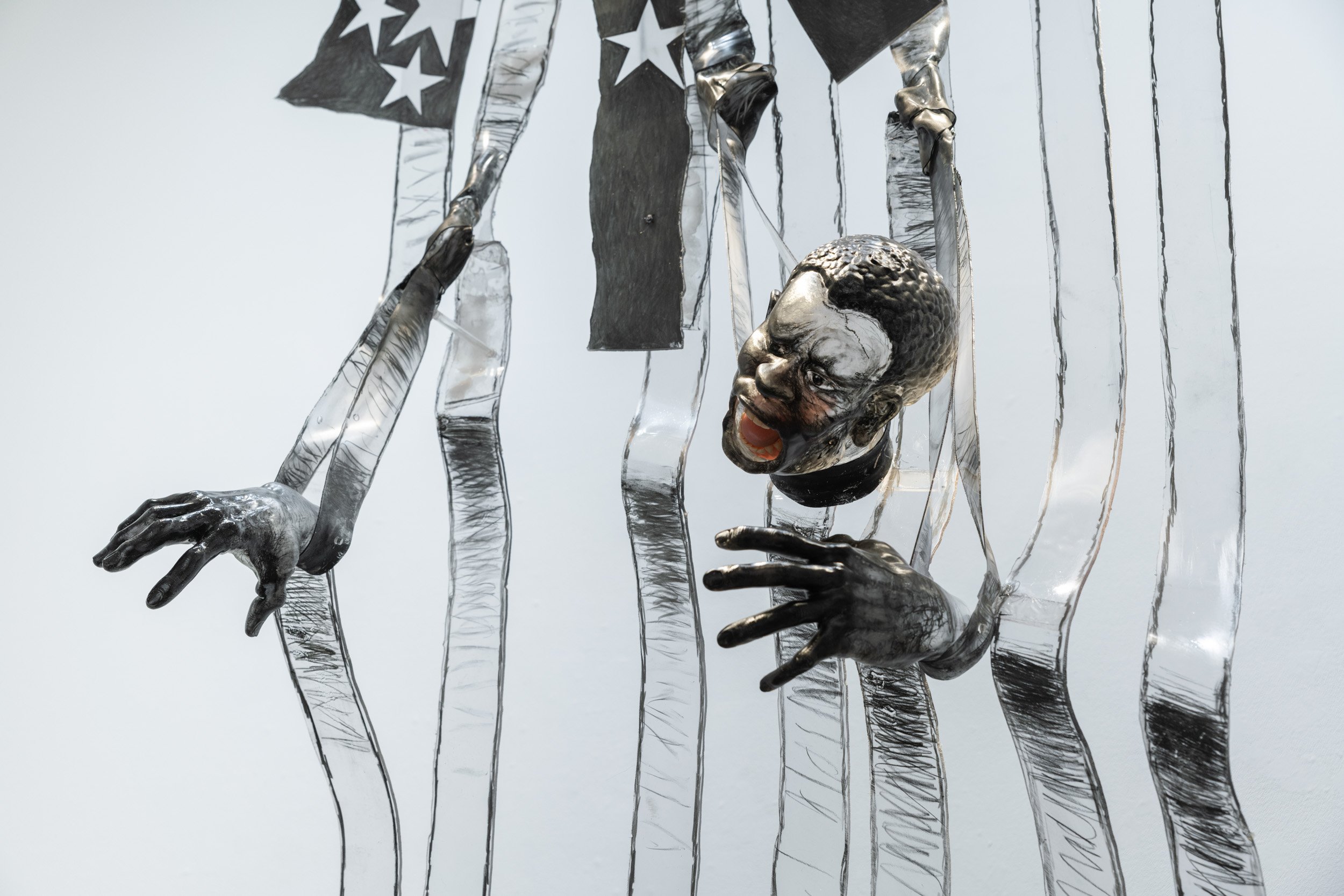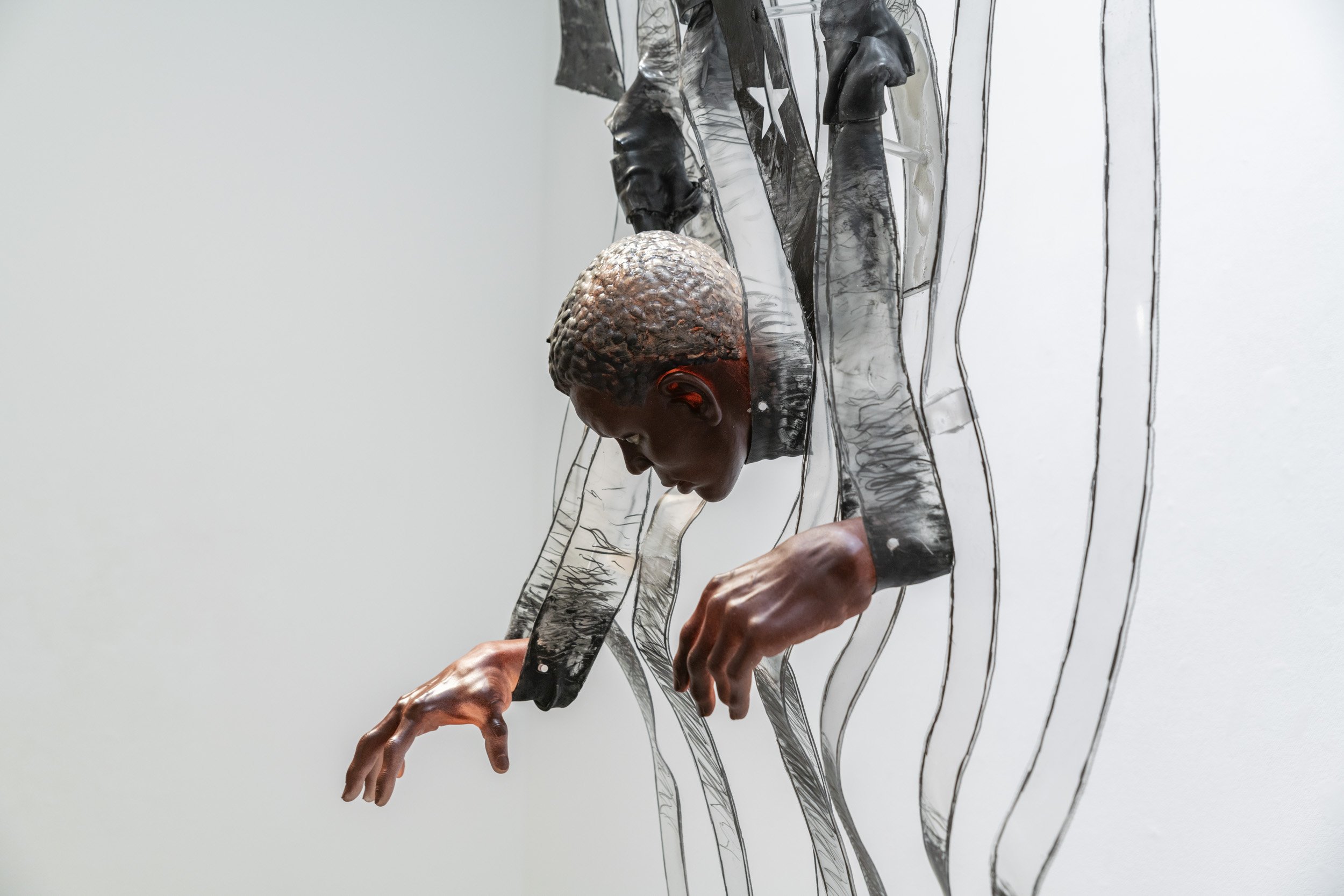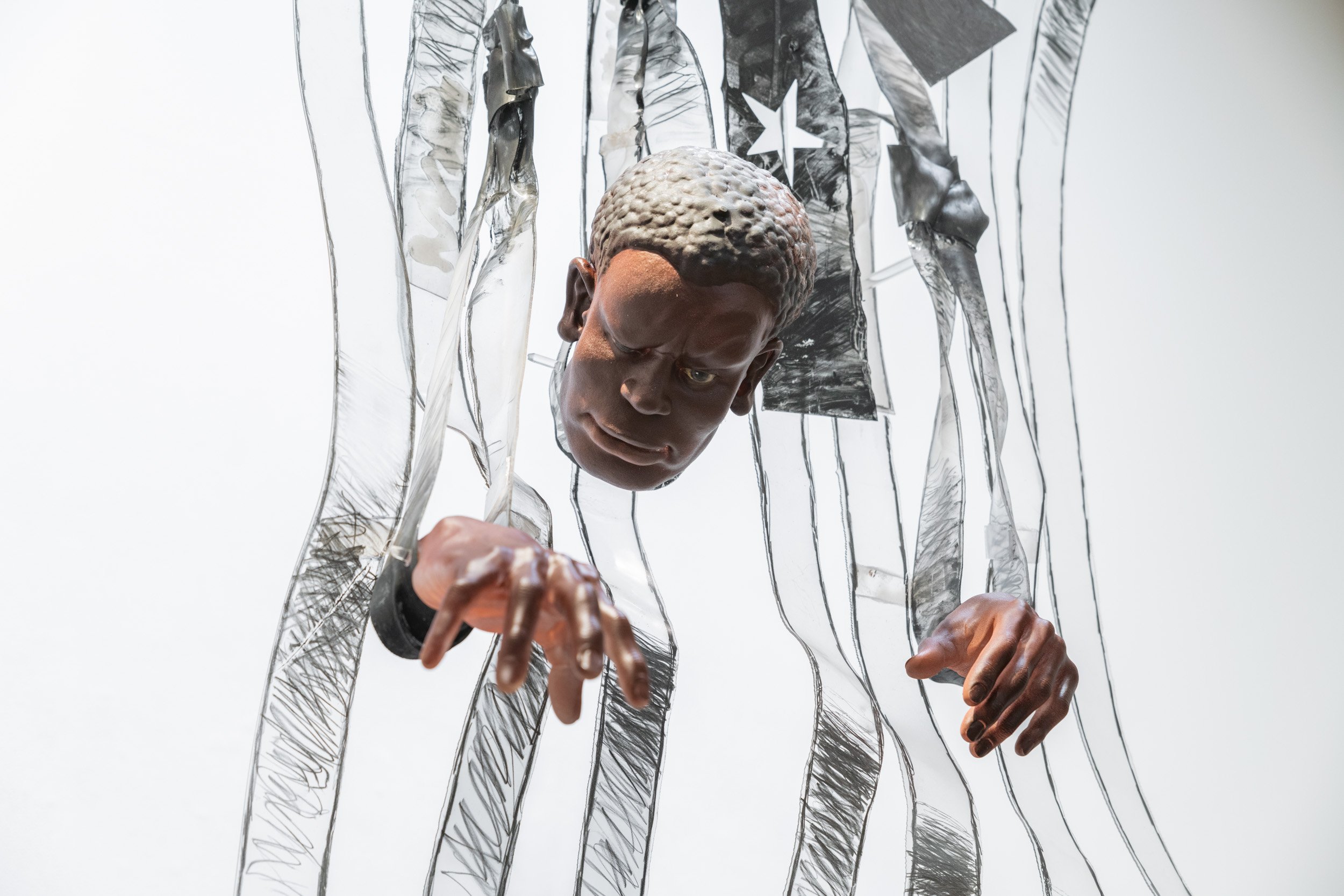Art Basel Miami Beach 2023 | Survey Sector, Booth S11
Ed Bereal: Disturbing the Peace
Untitled (Self Portrait) EB-069, c. 1975, graphite on paper, 11 x 8.5" paper, 17 x 14.25" framed
Inquire >
“Drawing, for Bereal, is rhythmic figuration, in which movements of the pencil become like improvisational beats and rhythmic pulses. Verbalizing his drawing technique, he falls into a spoken mimicry of tempos that he associates with jazz and blues. Bereal’s vocal intonations, as articulated in repeated sounds, parallels and analogizes the repeated strokes of his pencil. Consequently, we might say that we listen to Bereal’s self-portrait drawings as much as we behold them.”
- Matthew Simms, from Ed Bereal: Drawing Between the Boxes, “Wanted Ed Bereal for Disturbing the Peace,” The Whatcom Museum, Bellingham, WA.
Portrait of Ed Bereal in his studio, 2019
The Elizabeth Leach Gallery presents a select group of artworks that trace Ed Bereal’s aesthetic and intellectual evolution as a Black man, an important West Coast assemblage/collage artist, and activist artist in performance and video. Represented by the Elizabeth Leach Gallery since 1998, we believe that Ed Bereal is as important an artist for the present moment as he is a major historical figure whose work needs to be seen more broadly in the contemporary dialogue around racism, identity, and the environment. A powerful, unflinching voice for contemporary Black experience, Bereal’s performance practice and artworks have played essential roles in defining the socio-political landscape of predatory capitalism in which he has created challenging works that expose racism and its brutality in every decade since his appearance on the scene. An activist artist, he uses stark imagery and fierce language to uncompromisingly address racial violence, corporate greed, and complicity in domestic terrorism.
CHARGED: with Disturbing the Peace, 1998, archival pigment print, 20 x 46" image, 26.25 x 51.5" framed, Edition of 10, 2AP
Inquire >
Ed Bereal has been a central figure in the West Coast art scene since his work first came to public attention in the legendary War Babies exhibition (1961, Huysman Gallery) which was the first fully integrated art exhibition in Los Angeles. An active member of the West Coast Assemblage/Collage movement with artists Ed Kienholz, George Hermes, Wallace Berman, Jess, Joe Goode, Bettye Saar, and John Otterbridge, Bereal rapidly distinguished his work through the integration of Expressionist gesture with classical drawing skills, and use of Pop Art references with sharply political racial satire. The 1965 Watts Rebellion (“Riot” in the mainstream media) that was literally outside his studio door, caused Bereal to reassess the early privileged success he enjoyed in the rarefied world of major gallery and museum exhibitions with the emotional need to dig deeper into his own identity as a Black man and the reality of making works in support of political change. In the ensuing radical reordering of his practice and imagery, he withdrew from most exhibition opportunities and moved into performance work, video production, community-based street theater, and began to create a confrontational imagery that refused to sit quietly on the wall or pedestal as “high-end luxury goods.” Bereal has observed about this period, “...the deeper I got into the ghetto the further the art scene started to fade."
For Art Basel Miami Beach we offer a through line of significant works that illuminate the artist’s journey of discovery and actualization; revealing iconographic evolution and innovative materiality in his works. Our presentation features a wall of insightful self-portrait drawings (1958-1965) that evidence the artist’s superb draftsmanship and use of an often emotionally-charged gestural line to capture and expose his growing awareness of himself as a young Black artist in the world - from tender realism to bold near- abstraction, each session staring into the mirror reveals another state of being. The second wall focuses on the evolution of Bereal’s vision and trenchant social commentary in a photographic diptych "mugshot" from 1998 depicting the artist as he parodies American racial stereotypes. The poignant paired images interrogate America's racist history and racial present. At once an accusation and indictment, this powerful diptych peels away layers of historic minstrel farce to reveal a societal root of racial animus that shreds civility and convention. The final work is the first showing of a newly editioned video piece, Pull Your Coat (1986), which grew out of Bereal’s gorilla theater group the Bodacious Buggerilla. Using the format of a popular television game show, the work is a witty, fastpaced sendup of American racist tropes and actions that pillories the status quo and its foundation of institutionalized racism and capitalism; trenchantly true and painful, the work is as powerful today as it was thirty-seven years ago.
Ed Bereal / Bodacious TV Works, Pull Your Coat (excerpt with artist commentary), 1986, video with sound. 26:43 minutes, Edition of 10, 2AP
Inquire >
“Bereal’s 1986 San Diego public television production of Pull Your Coat… a spoof of a quiz show featuring contestants who act out different African-American types, including the righteous church women, the Southern community educator, the white-faced appeaser, and so on. The quiz questions feature highlights and lowlights of black history, and the guests’ various responses ridiculously enact the positions available in a depressing and complicated 1980s… In its production, clever editing, as well as intelligence, Pull Your Coat is among the under-sung classics of black experimental video…”
- Malik Gaines from his essay, Creating with a Purpose: Ed Bereal and The Bodacious Buggerrilla, from the book “Wanted Ed Bereal for Disturbing the Peace” published by The Whatcom Museum, Bellingham, WA.
Ed Bereal, Bodacious Buggerilla Performance Stills, 1968-1975
"...one of Mr. Bereal’s greatest influences since he was a child is Norman Rockwell, the de facto illustrator of white nostalgia.
“He was probably the most political artist that I have ever known and maybe that is still true. He was showing a kind of America that was really kind of alien to me,” Mr. Bereal said. “He was on the sunny side of the street, and I was on the shady side.”
“Wanted” can be seen as a lifetime of Mr. Bereal answering the question provoked by Mr. Rockwell: What does America look like from my side of the street? Or, as the artist has personified it, what does “Miss America” look like?
Mr. Bereal’s answer is a grim, industrial spin on Lady Liberty, with skeletal metal fingers, sneering teeth and a nail crown. Miss America is Bereal’s puppet master and appears frequently, such as in the installation “Miss America: Manufacturing Consent (Upsidedown and Backwards),” where docile Americans queue to have their heads nailed on upside-down and backward by the matriarch."
- New York Times, Ed Bereal Brings Edgy to Bellingham, By Alex V. Cipolle, Oct. 23, 2019
Homage to LA: Just a Lil' Sumpthin for the Kids, 1994, mixed media sculpture with found objects, 84 x 63 x 32"
Inquire >
“Homage to LA: Just a Lil’ Sumpthin for the Kids: It seems to be a farewell to his days in Southern California, the land of sunshine, but also of police brutality, and the Crips and the Bloods. We see Miss America, skeletal and mechanical as ever, astride the American flag, depicting the spiritual death bound up in our consumerism, as she shops for toys “for the kids.“ Amongst the “toys” in the cart we find two handguns, important elements in the violence that’s always been central to the achievement of the American Dream and its sustenance in future generations.”
- Vernon Damani Johnson from his essay, Ed Bereal: The Bellingham Period, from the book “Wanted Ed Bereal for Disturbing the Peace” published by The Whatcom Museum, Bellingham, WA.
Miss America: Manufacturing Consent: Upside Down and Backward, 2000-2015, mixed media sculpture with found objects, 10 x 12 x 16' feet
INQUIRE >
"I see myself as a 21st century “landscape painter/artist”. Using 21st century technology I paint the social/political landscape that I experience on a daily basis."
- Ed Bereal, 2023
EXXON: The Five Horsemen of the Apocalypse, 2011-2019, mixed media sculpture with found objects, 8 x 40 x 3.5 feet
INQUIRE >
“This piece evolved while I was working on it. I wanted to say something about climate change, the threat of fossil fuels, and the reason I went from four horsemen of the apocalypse to five is because Exxon was five letters…
The first is Donald Trump as the antichrist. The second is war. The third is corporate capital. The fourth is plague, famine. And the fifth is death. Represented by the various images that I thought best illustrated that. I particularly like famine and plague being illustrated by Ronald McDonald. Of all of them, that might be my favorite.”
- Ed Bereal, 2021
Joker, 2011, mixed media sculpture, 49 x 64 x 16"
INQUIRE >
"Honest" Abe "...With Malice Toward None and Charity for All...", 2023, plastic, resin, graphite and paint, 98 x 39"
INQUIRE >
"...With Liberty and Justice for All??", 2023, plastic, resin, graphite and paint, 96 x 37"
INQUIRE >
Details of "Honest" Abe "...With Malice Toward None and Charity for All..." & "...With Liberty and Justice for All??" from exhibition Wanted: Ed Bereal for "Still Disturbing the Peace"
“Each artwork is a kind of rendering etched into the substrate of clear nylon exposing the contours of a figure that appears to be entangled by, or fighting to emerge from, clear acrylic bars which resemble the stripes of the American flag.”
- Press Release, WANTED: Ed Bereal for Still Disturbing the Peace, August, 2023
The Birthing of the American Middle Class, 1999, oil and graphite on inkjet print on panel, 80 x 50"
INQUIRE >
America's Self Portrait: Three Schmucks & We're Out, 2003, oil and graphite on inkjet print on panel, 34.75 x 23" unframed,
45.75 x 42.5" framed
INQUIRE >
Mona Lisa/Condoleezza, Angel of Darkness, 2004, oil and graphite on inkjet print on panel, 41.25 x 29" unframed, 48.75 x 35.5" framed
INQUIRE >
Again (Miss America, George Dubya and the Missing Florida Votes), 2002, oil and graphite on inkjet print on panel, 38.5 x 49.75" unframed, 40 x 51.5" framed
INQUIRE >
“Tireless creative inquiry defines Ed Bereal. He fulfills curiosity by making large and sometimes risky moves… formed a theater group that would take his art-making to the streets. His explorations in documentary film have taken him inside Irish Republican Army prisons, to South American rainforests, and on scientific missions in Serbia. He investigates the larger questions in his life through myriad, and sometimes desperate, but always passionate, forms of expression.”
- Amy Chaloupka, Curator of Art, Whatcom Museum, Bellingham, Washington
Ed Bereal in Kosovo, 1991
MORE
INFORMATION
ABOUT THE ARTIST:
Ed Bereal attended Chouinard Art Institute from 1958-1962 and later taught at University of California, Irvine and Western Washington University. His work is in the collection of The Museum of Modern Art (New York, NY); The Smithsonian Institute (Washington D.C.); Los Angeles County Museum of Art (Los Angeles, CA); San Francisco Museum of Modern Art (San Francisco, CA); Museum of Fine Arts (Houston, TX); and The Brooklyn Museum (Brooklyn NY) among others. Recent exhibitions include the Centre Georges Pompidou (Paris, France) in 2006 and Moderna Museet (Stockholm, Sweden) in 2009; L.A. Object & David Hammons Body Prints, Tilton Gallery (New York, NY) in 2006; as well as participating in Pacific Standard Time at The Getty Museum (Los Angeles, CA) in 2011. His first significant museum retrospective, Wanted: Ed Bereal for Disturbing the Peace at the Whatcom Museum of Art (Bellingham, WA) was in 2019 and Bereal’s APEX installation at The Portland Art Museum (Portland, OR) was on view February 23, 2020 through June 27, 2021. Both of these recent exhibitions included publications. Bereal has been represented by Elizabeth Leach Gallery since 1998.



